The Ultimate Startup Dashboard Guide

Throughout this ebook, you will get an insider’s view to the way we at Klipfolio run our business using dashboards. Key leaders in our organization refer to these dashboards daily, hourly, and in some cases minute by minute, to keep us on target. These dashboards are accessible to everyone in the organization and displayed on LCD TVs throughout our office. This encourages everyone to be accountable for the metrics behind our business. You'll discover:
- Templates of real-time dashboards every startup should be using now
- Dashboards for CEOs, Marketing, Dev-Ops, Sales, Support, and UX
- Links to live examples of the 12 operational dashboards that Klipfolio has on its office walls
Look for the “View the Live Demo” button to see our interactive public dashboards. It probably won’t surprise you that we’ve modified the data behind each dashboard. However, other than some changes to the underlying data, these dashboards are 100% replicas of the ones we use to run our business.
How We Use These Dashboards
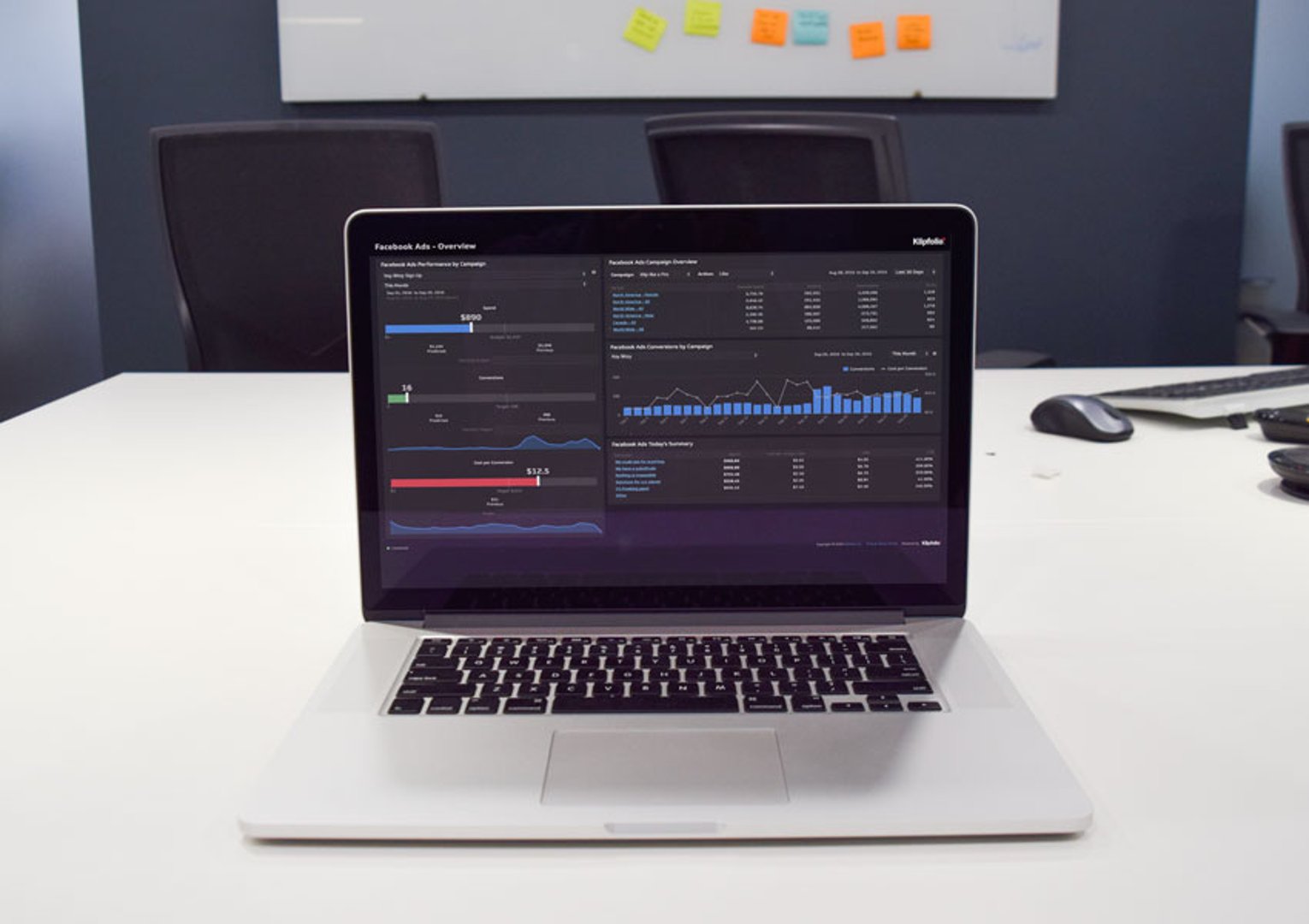
For a startup, the name of the game is growth. In order to succeed, we need to grow. Sound familiar?
In a fast-paced startup, the business environment is always in flux. You need to be able to pivot on a moment's notice, and make changes to programs, campaigns, and internal activities in real-time. At Klipfolio, dashboards are out life-line, providing us with real-time visibility into the mos timportant metrics driving our business. When something goes wrong, our dashboards immediately warn us of the situation. It's not just about monitoring. When a number goes from good to bad, we act.
The dashboards in this guide give you an open, honest look at how we run our business. If they convery a sense of urgency, it's because the numbers aren't always pretty and success is not always easy. But, to be successful, we know we can never lose sight of our performance.
How do we use these dashboards? To inspire action, to make positive changes, and to grow our business.
CEO Dashboards

"My dashboard enables me to keep my finger on the pulse of the business. In one view, I can track KPIs for every department: from marketing, sales, and support to user experience, dev-ops, and finances."
- Allan Wille, CEO/President of Klipfolio
Overview
In a startup, dashboards play an especially important role in surfacing real-time metrics. This information is essential for helping the executive team make -- quite literally -- real-time decisions. The pace at which startups move puts extra pressure on the executive team to meet short-term objectives and goals.
Executive
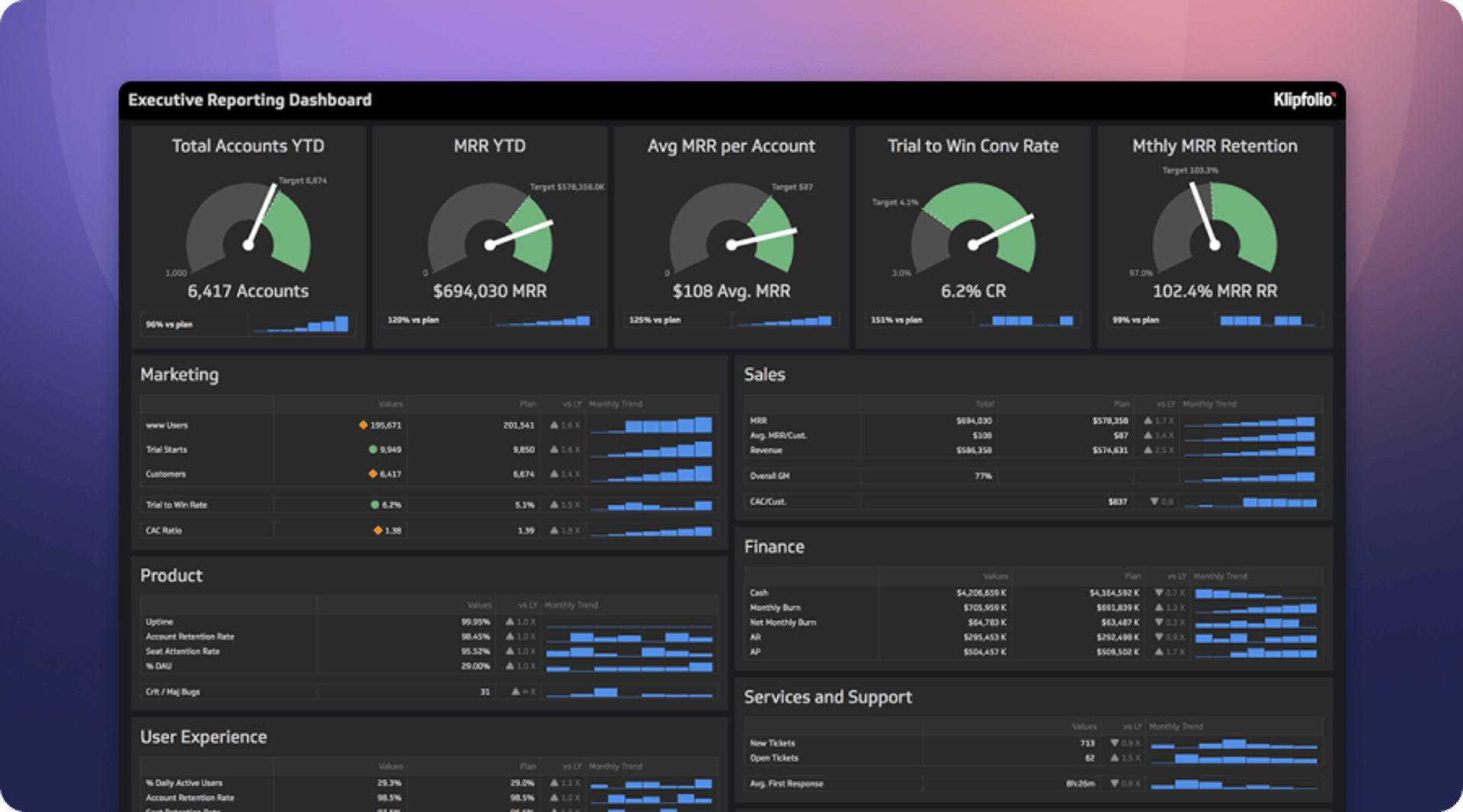
Dashboard Overview: Klipfolio’s CEO dashboard displays operational KPIs for each department at Klipfolio. This gives Allan and his team instant visibility into our progress towards key growth targets. As a SaaS startup, we track key business metrics such as total accounts, MRR, MRR per account, lead to win rates, and retention. Each department contributes to these high level goals by achieving objectives like: number of visitors and leads (marketing), new wins and average MRR (sales), active users and account retention (UX), monthly burn rates (finances), product uptime (development), and new and open tickets (support).
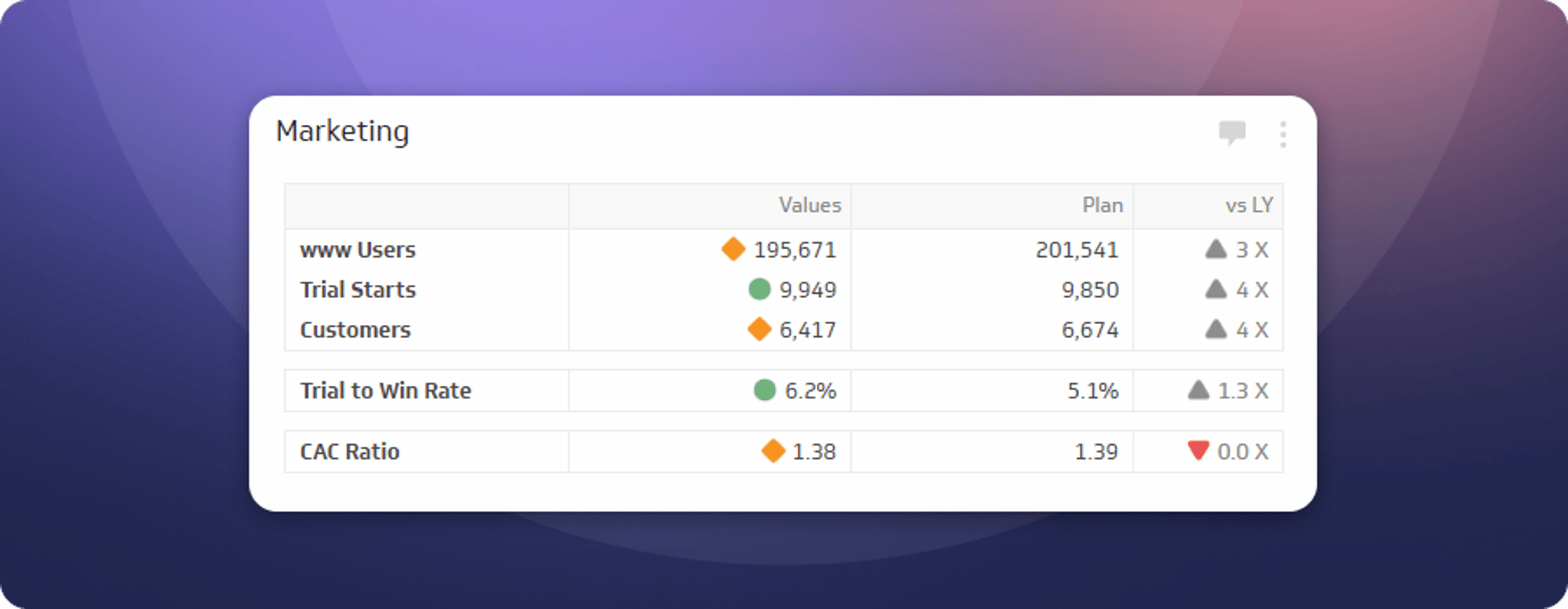
Marketing
Key Metrics include number of web visitors, trial starts, and trial to win rates.
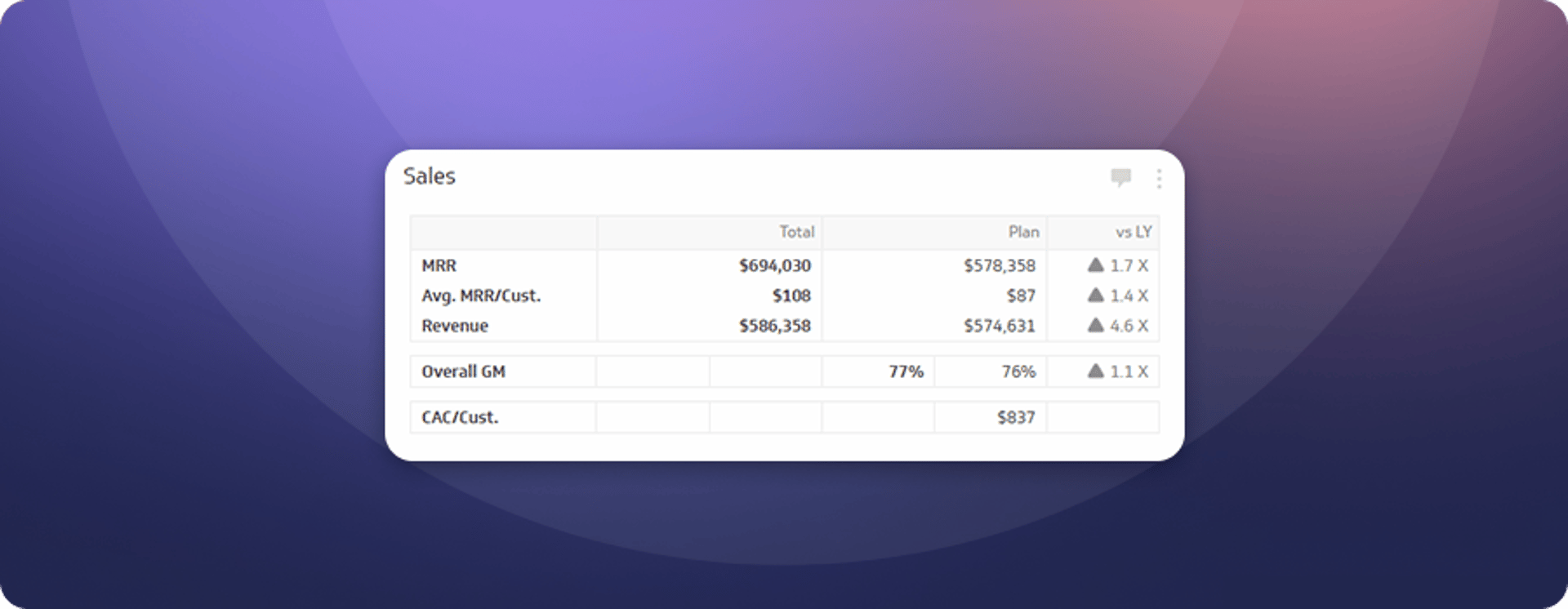
Sales
Key metrics include total MRR, average MRR per customer, and the cost to acquire customers.
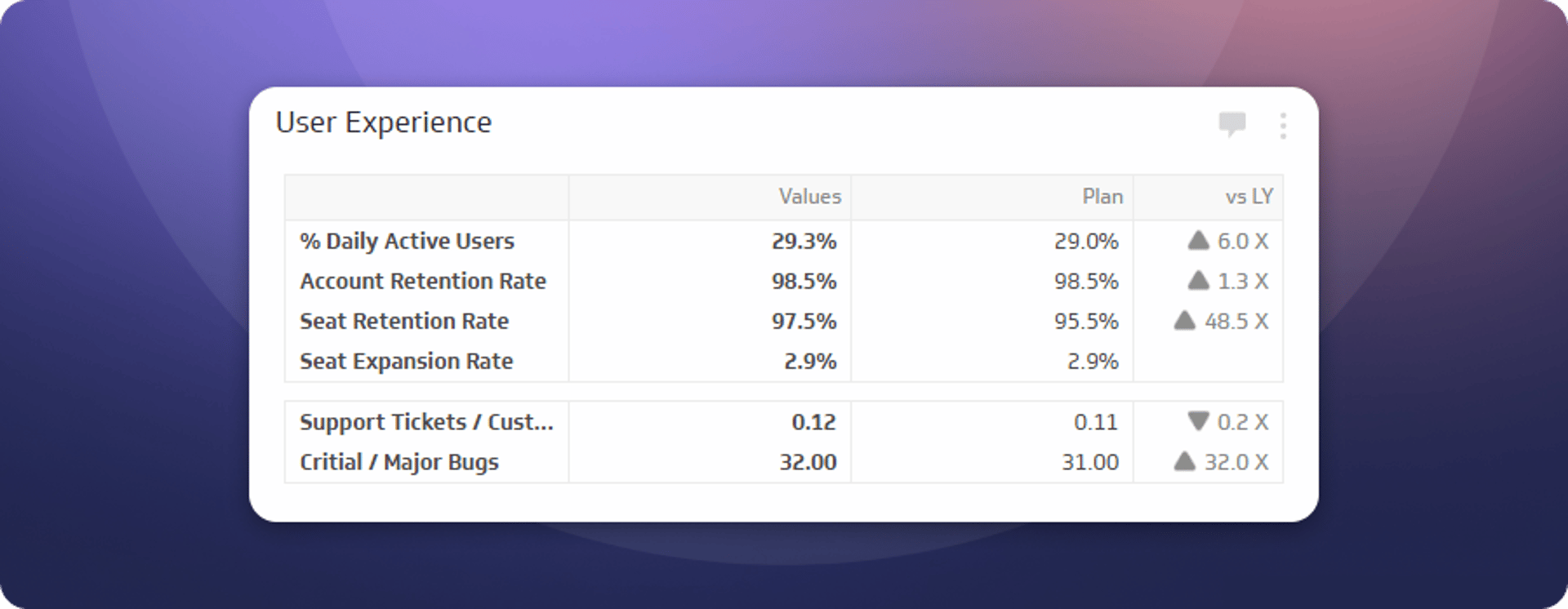
User Experience Metric
Key Metrics include % of daily active users, seat retention rate, and number of tickets submitted per customer.
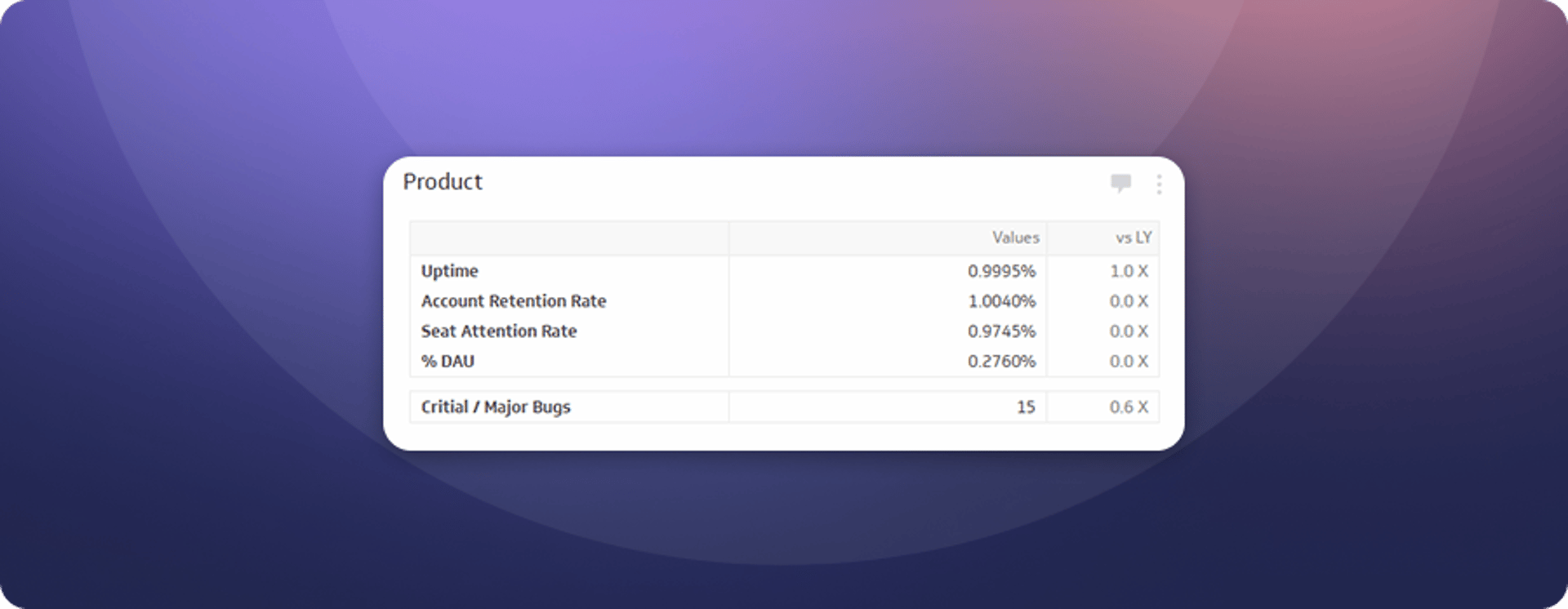
Product
Key Metrics including uptime, account and seat retention, and number of critial and major bugs.

Finance
Key Metrics including total cash, monthly burn rate, and account receivables.
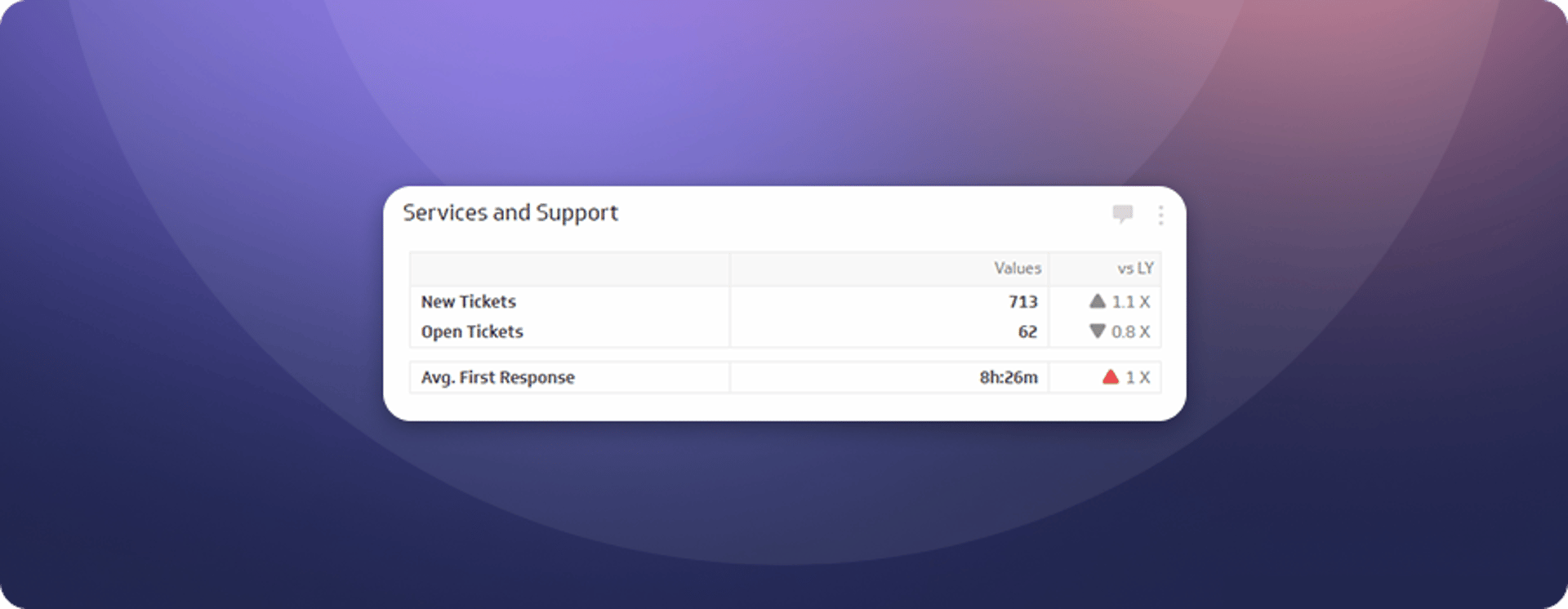
Services and Support
Key Metrics including new tickets, open tickets, and average first response rate.
Marketing Dashboards
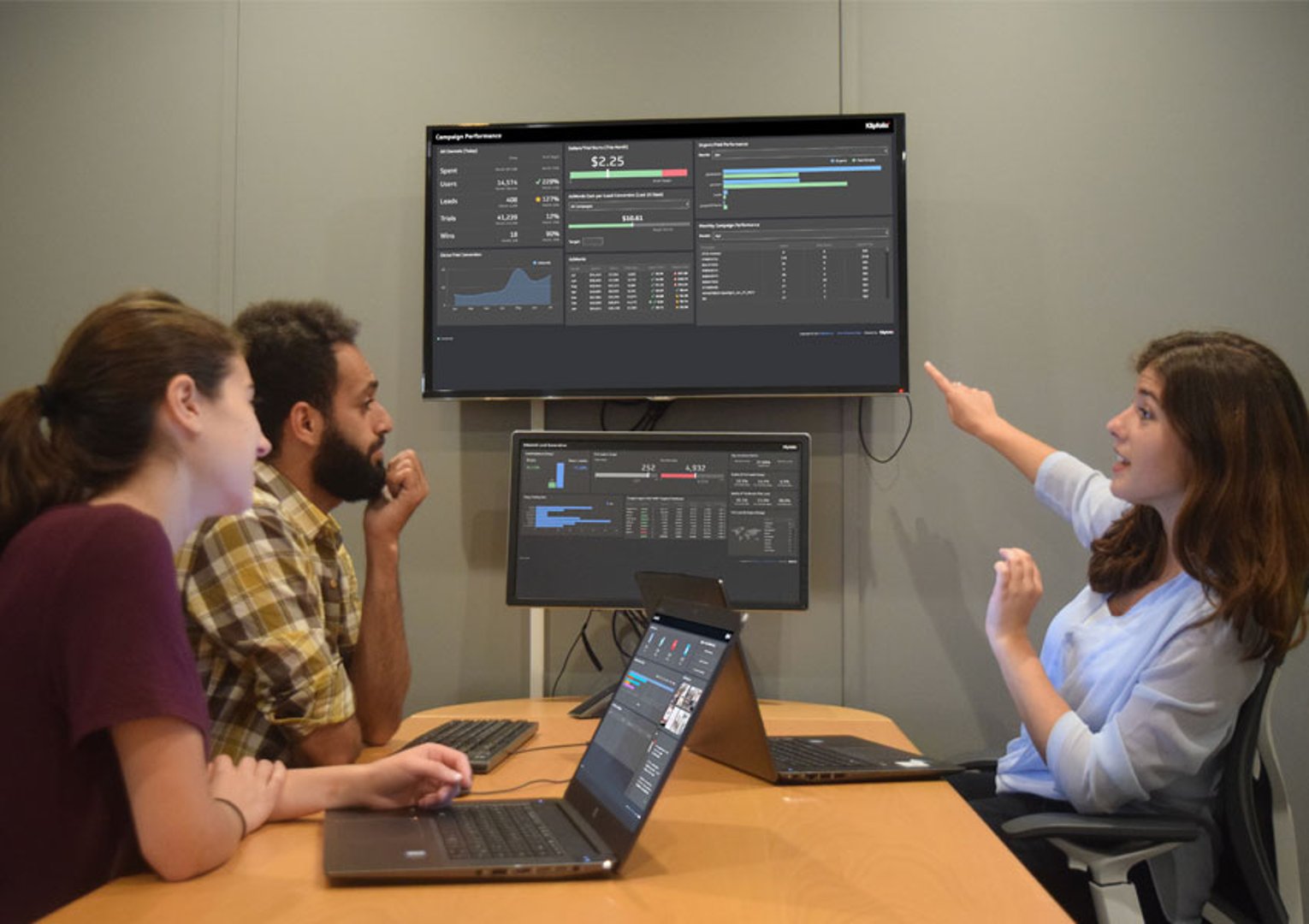
"What keeps us up at night? Growth. If we’re not growing the business, we’re not doing our job. We’ve created 3 operational dashboards to track how we’re performing. With insights from these dashboards, we can fix small inefficiencies before they become major problems, and we can shift effort and investments to where we are getting the best results."
- Jonathan Taylor, Senior Marketing Manager
Overview
Like many of you, we’ve adopted the latest, greatest digital marketing tools available. As a result, our metrics are calculated by combining data from all those services. Take, for instance, the marketing funnel. It’s impossible to imagine creating a realistic funnel without fetching metrics from two or more services: web visitors from Google Analytics, leads from Marketo (or your choice of marketing automation tool), opportunities and wins from Salesforce (or your favourite CRM), and impressions from digital advertising services (AdWords) and social media.
Social Media
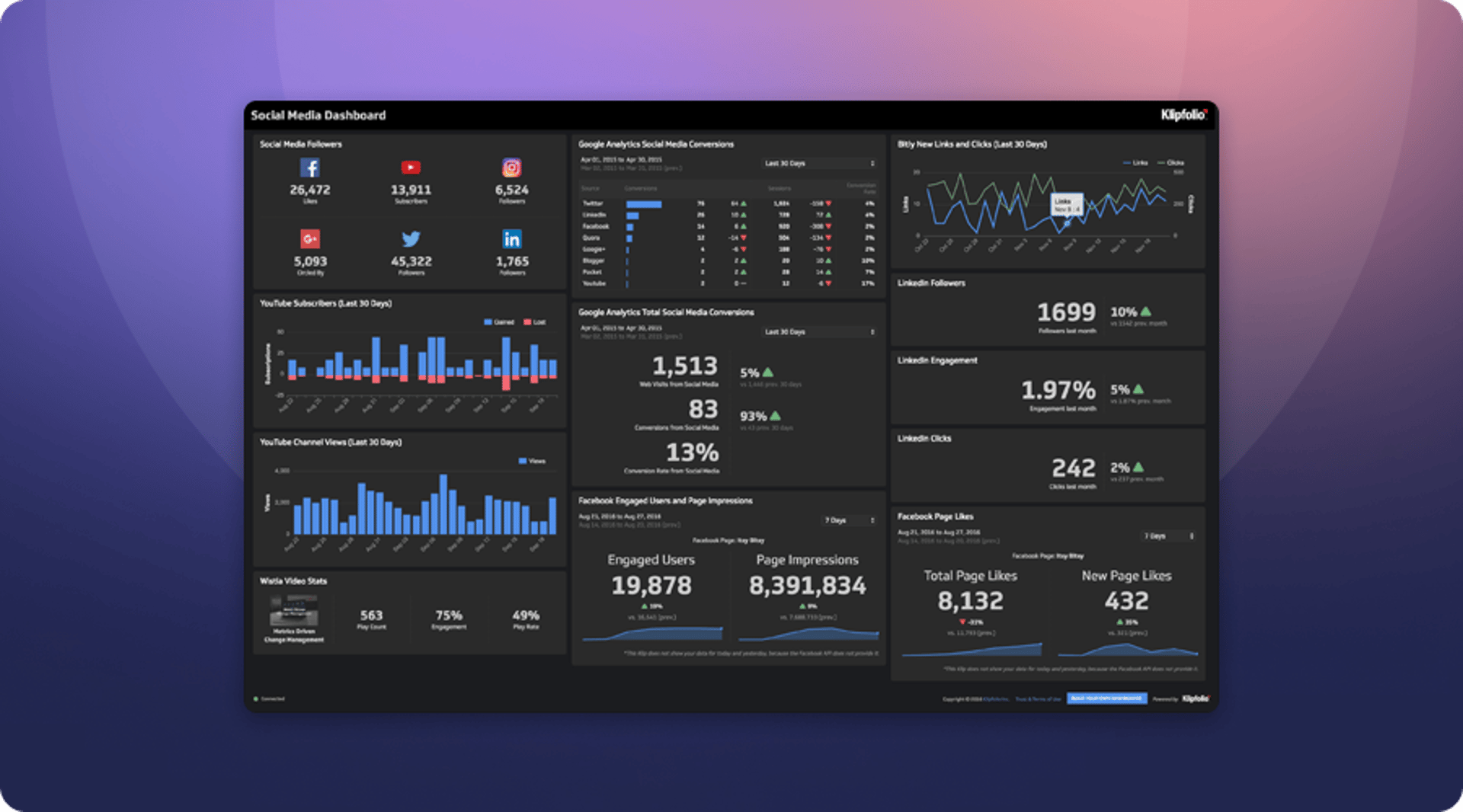
Dashboard Overview: We monitor the impact of our social media marketing efforts by combining metrics from social platforms with Google Analytics, our web monitoring tool. The reason for this is simple: we believe that social media efforts should deliver tangible results in terms of web visitors and new leads.

Engagement from Social Media (30 Days)
One of the ways we evaluate our social media performance is by measuring how effective we are at driving visitors and leads to our website. This high-level Klip provides an overview of how many visitors and leads came from social media campaigns, and tells us our overall social media conversion rates.
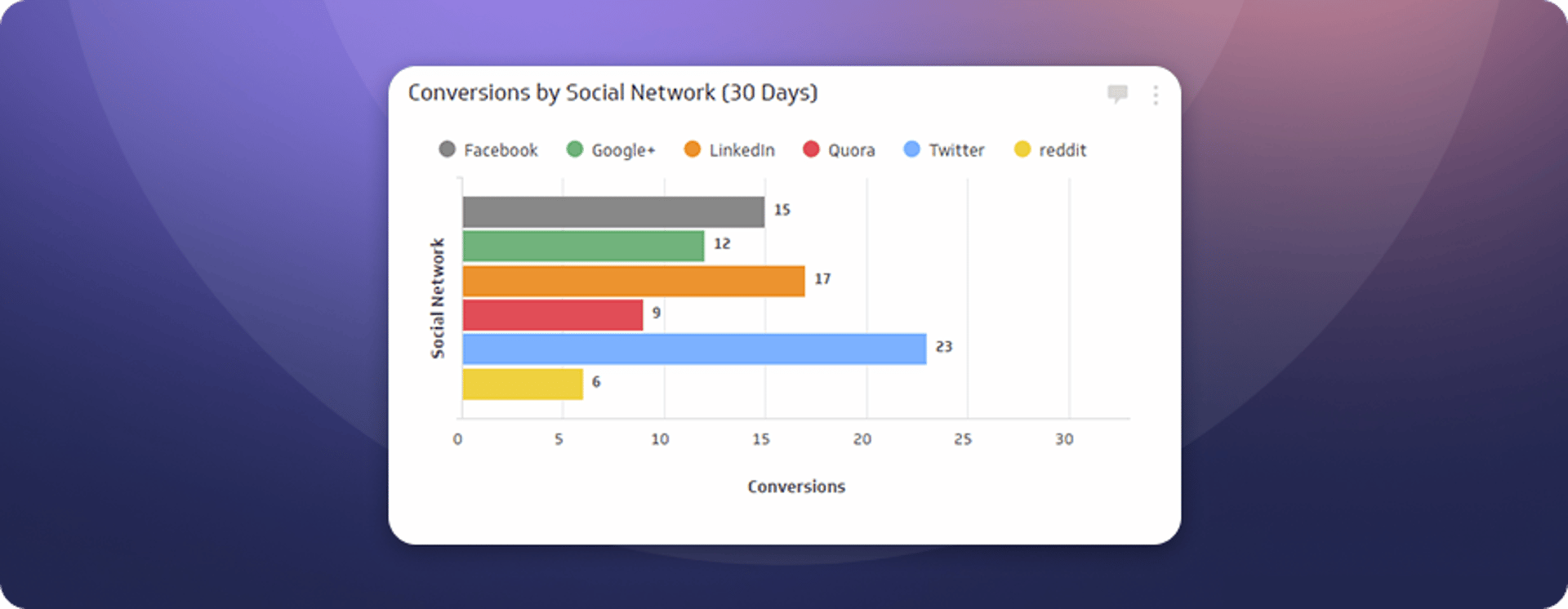
Conversions by Social Network (30 Days)
As a startup, we only have so many marketing resources to allocate to social media campaigns. Therefore, we want to focus on social networks that are most attuned to our target market. The first way we assess this is to look at the number of conversions coming from each platform. Quora consistently drives qualified leads to our website, and we’ve invested in that network accordingly.
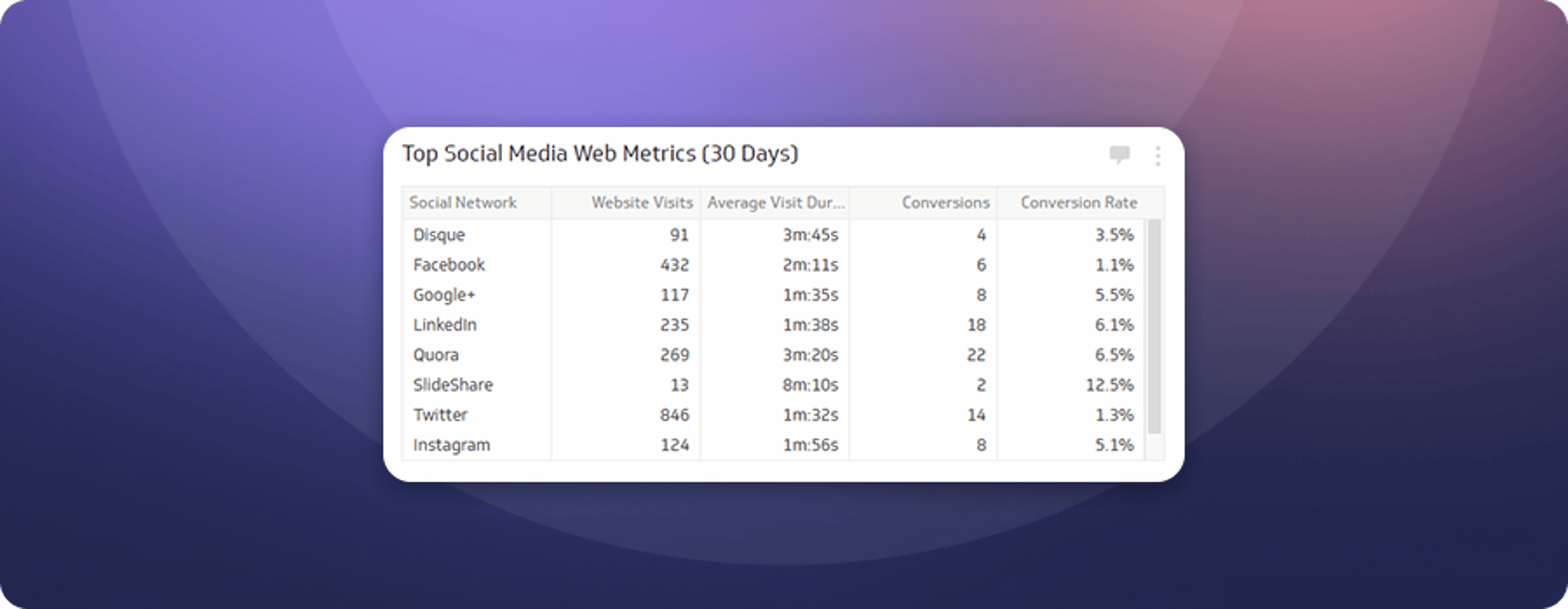
Top Social Media Web Metrics (30 Days)
As with the previous Klip, we want to understand the quality of traffic coming for a particular social network. To help us dig deeper into this data, we measure the number of visits, average visit duration, conversions, and goal conversion rate for each social network. This Klip helps to answer the question, "how effective are our marketing efforts on social media?"
Campaign Performance
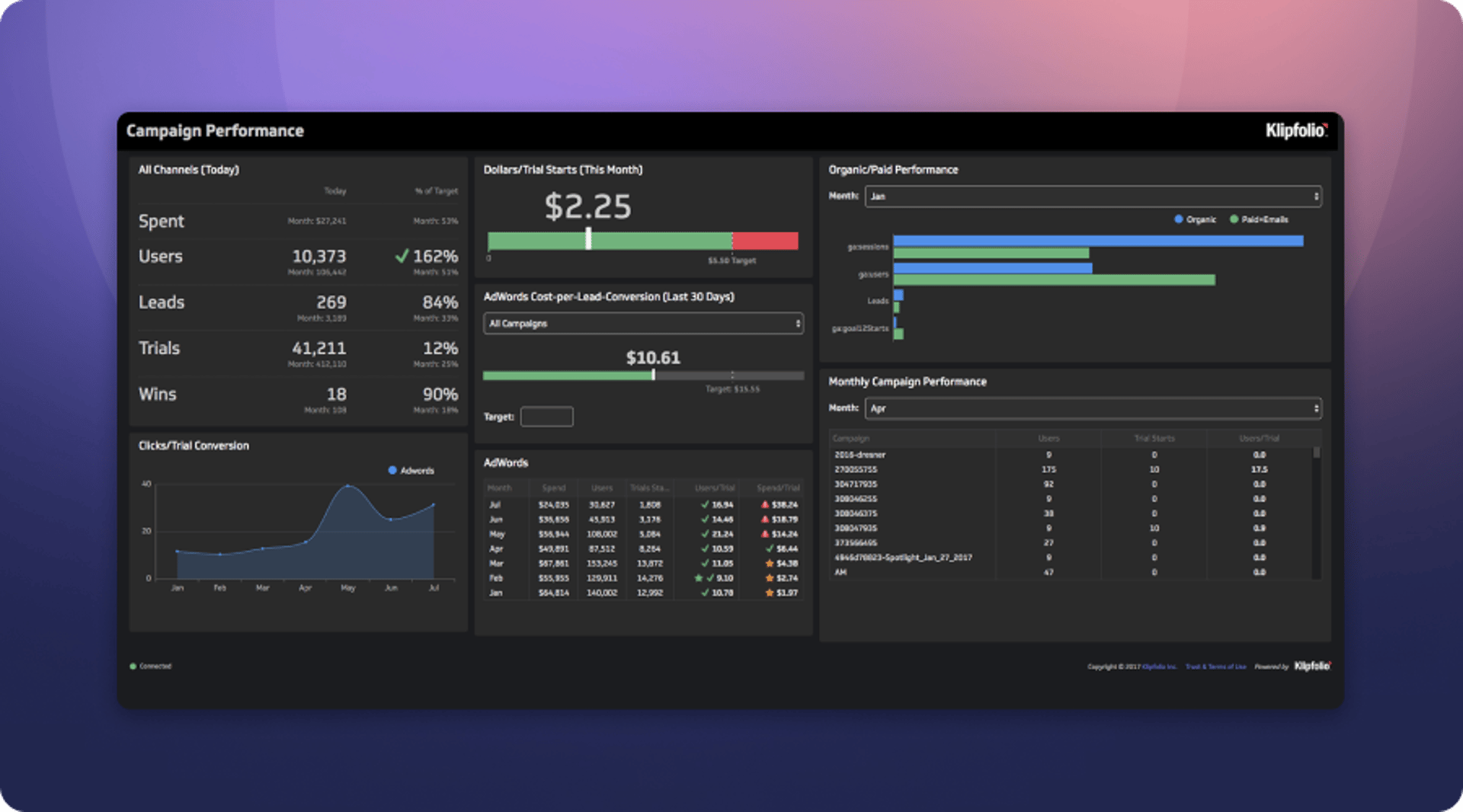
Dashboard Overview: Our digital marketing team is launching and managing dozens of campaigns at the same time. Without a dashboard to track these activities, it would be easy to get lost in the deluge of data and metrics. On the paid advertising spectrum, we monitor our AdWords spend very closely to ensure we're generating the right volume of leads at an acceptable cost per conversion.
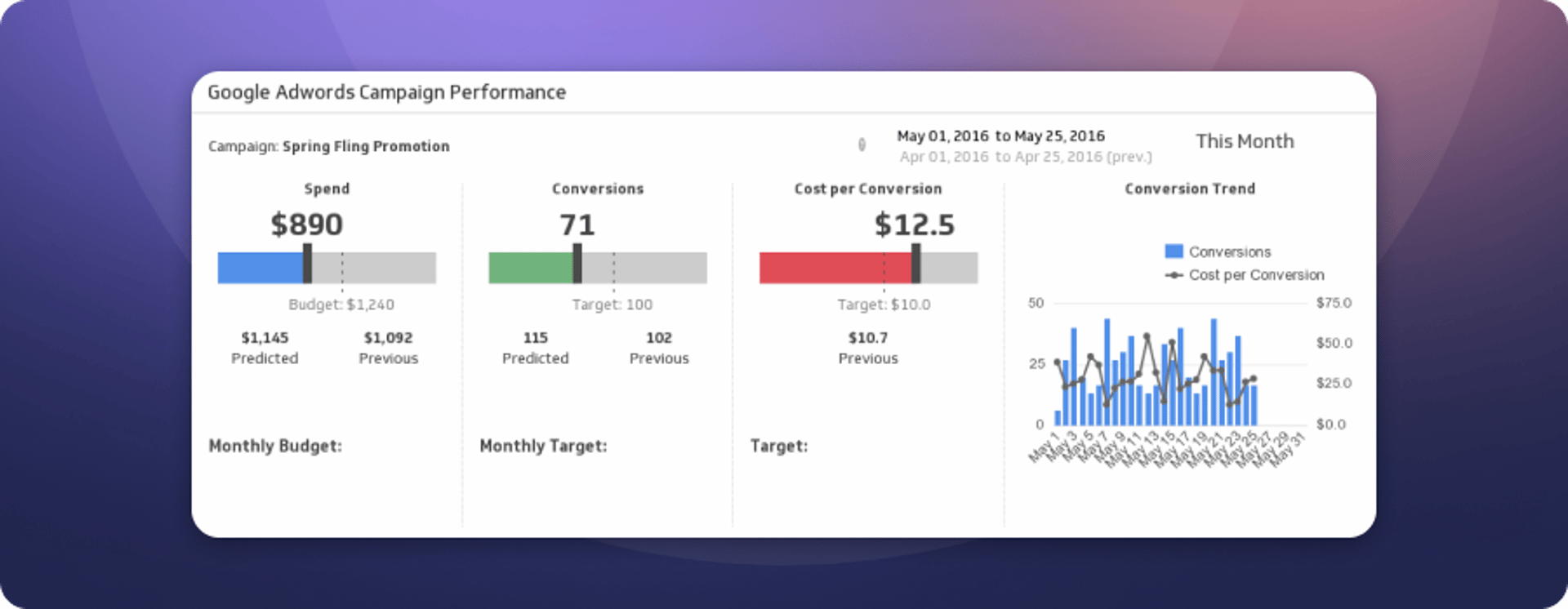
Adwords
This Klip helps us monitor the effectiveness of our Adwords campaigns, which accounts for the bulk of our online advertising budget. The ‘Spend/Trial’ ratio is monitored particularly closely, and is measured against the target of $10/Trial.
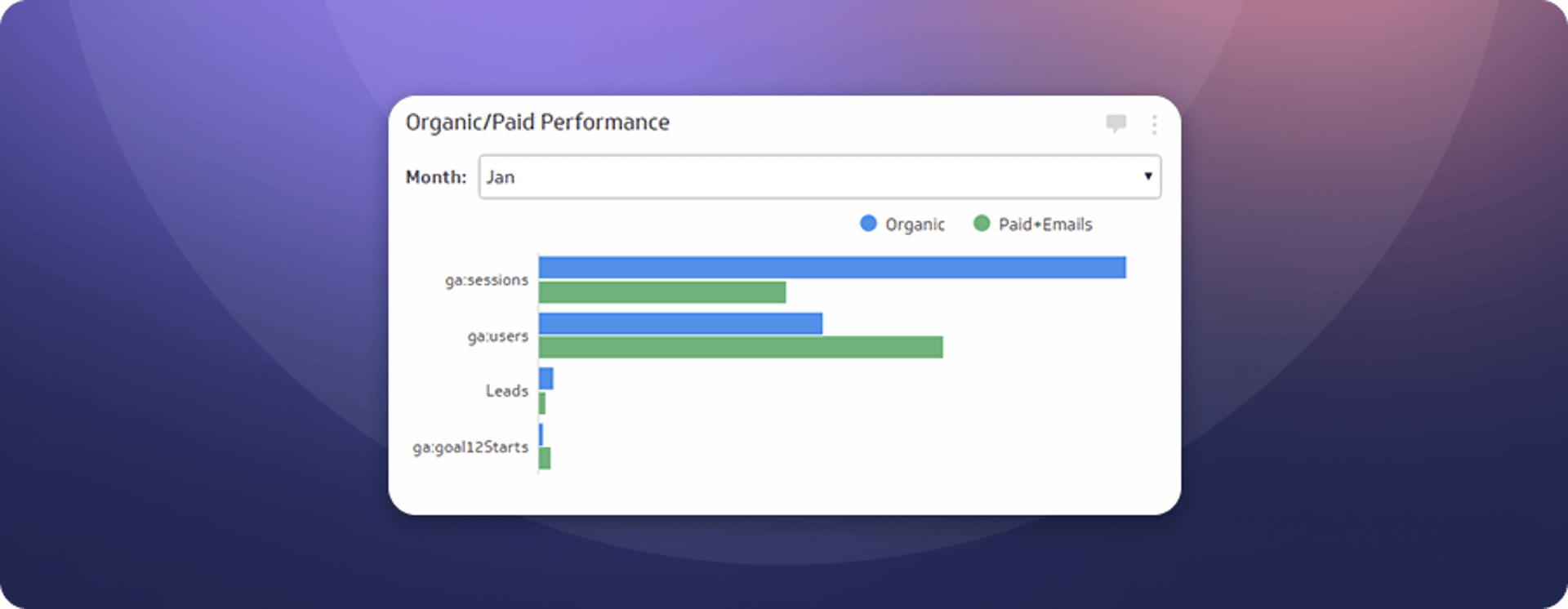
Organic/Paid Performance
This Klip updates us on the relative performance of paid/organic web traffic and activity. Each month we target a different balance between the two, depending on our goals, priorities, and bandwidth to generate and push out new content.
Inbound Lead Gen

Dashboard Overview: One of the most effective marketing tools for a SaaS startup is a free trial, and this is true of Klipfolio, too. In our experience, trial leads tend to be of high quality and much more likely to convert into paying customers. Therefore, our marketing efforts do focus on driving a certain amount of trials each month, and this dashboard tracks our progress towards achieving a monthly goal.
Lead Breakdown (Today)
This Klip shows the daily breakdown between trial leads and leads from other sources. As mentioned previously, trial leads represent highly qualified prospects that convert at a much higher rate than leads from other sources. Basically, prospects that commit time to building a dashboard often fall in love and want to keep their Klipfolio account up and running.
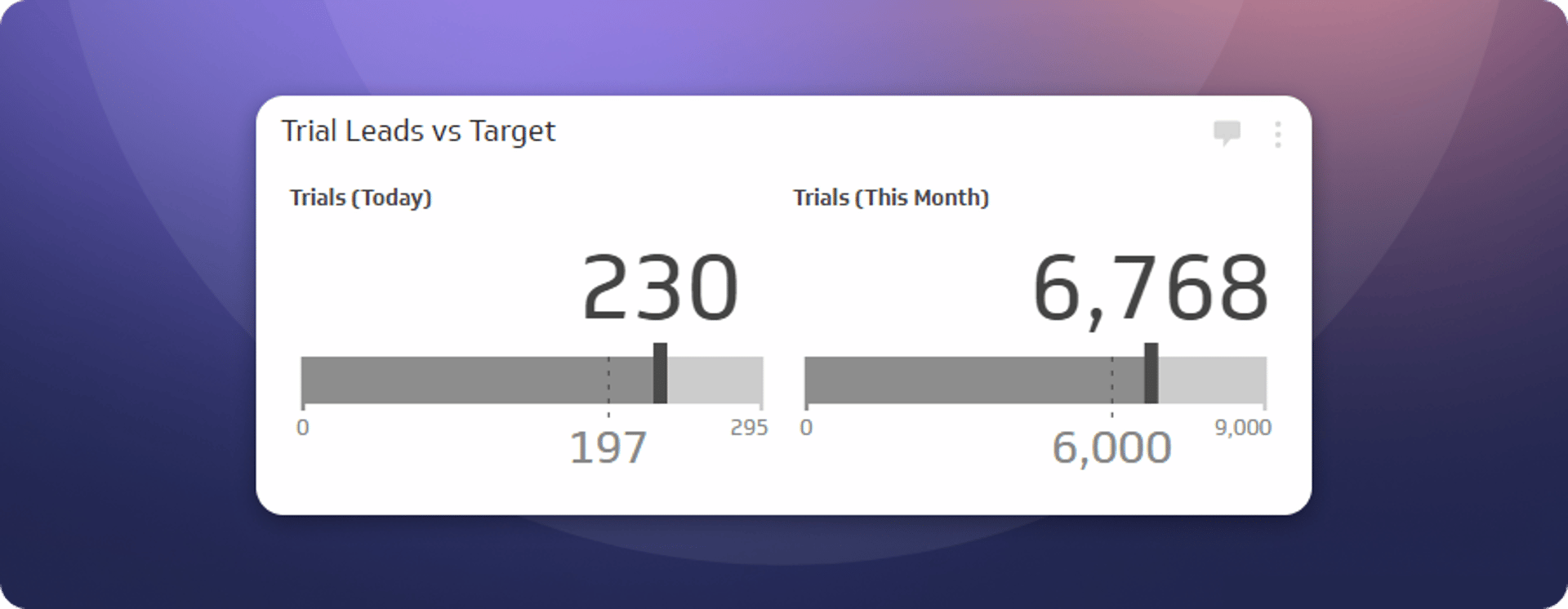
Trial Leads vs. Target
This Klip shows progress towards two trial targets: a daily trial target, and a monthly trial target. The daily target is calculated based on the number of trials we need to attain in order to hit our monthly target. We’ve made a conscious choice to keep the monthly trial lead gauge red until we’ve hit our target; our marketing team thrives off a sense of urgency, even if (sometimes) it’s artificial.
Development Dashboards

"In a software startup, development is the product building engine. Successful startups ensure this team runs as quickly, efficiently, and effectively as possible so the product team can deliver astounding results."
- Ali Pourshahid, Senior Software Development Manager
Overview
At Klipfolio, the development team uses dashboards to track product requests, priorities, and progress on new development projects. This includes tracking the number of critical and major issues to ensure issues don’t surpass an acceptable threshold, and managing internal resources to call out projects and features that need additional prioritization or collaboration.
Development
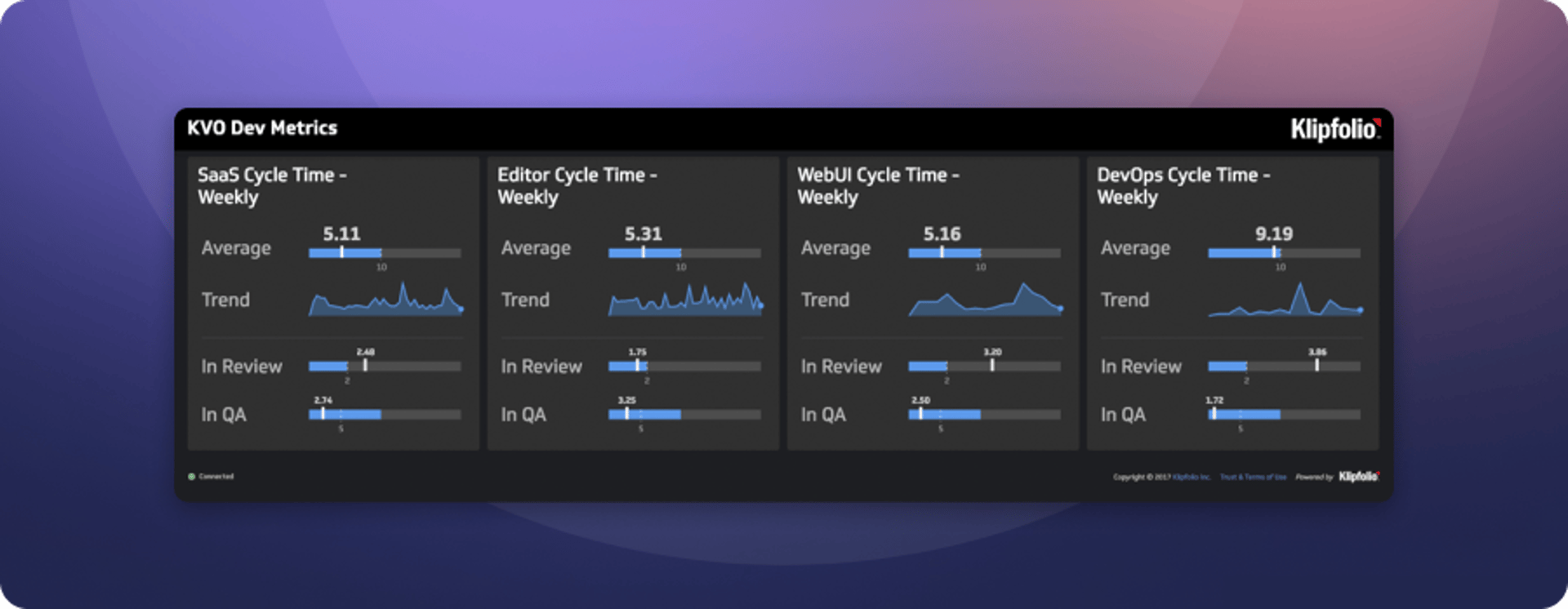
Dashboard Overview: The development dashboard has been created to allow the team to monitor important development KPIs and take action on them. The dashboard is not only projected live on our wall board, but we also look at it at the end of our daily standup meeting and take action as needed.

Unresolved Issues
This Klip is used to track the number of Critical and Major issues. Critical issues are the defects that are impacting several customers and require immediate attention. Major issues are less significant (e.g. impact one customer and there is usually a workaround).
DevOps
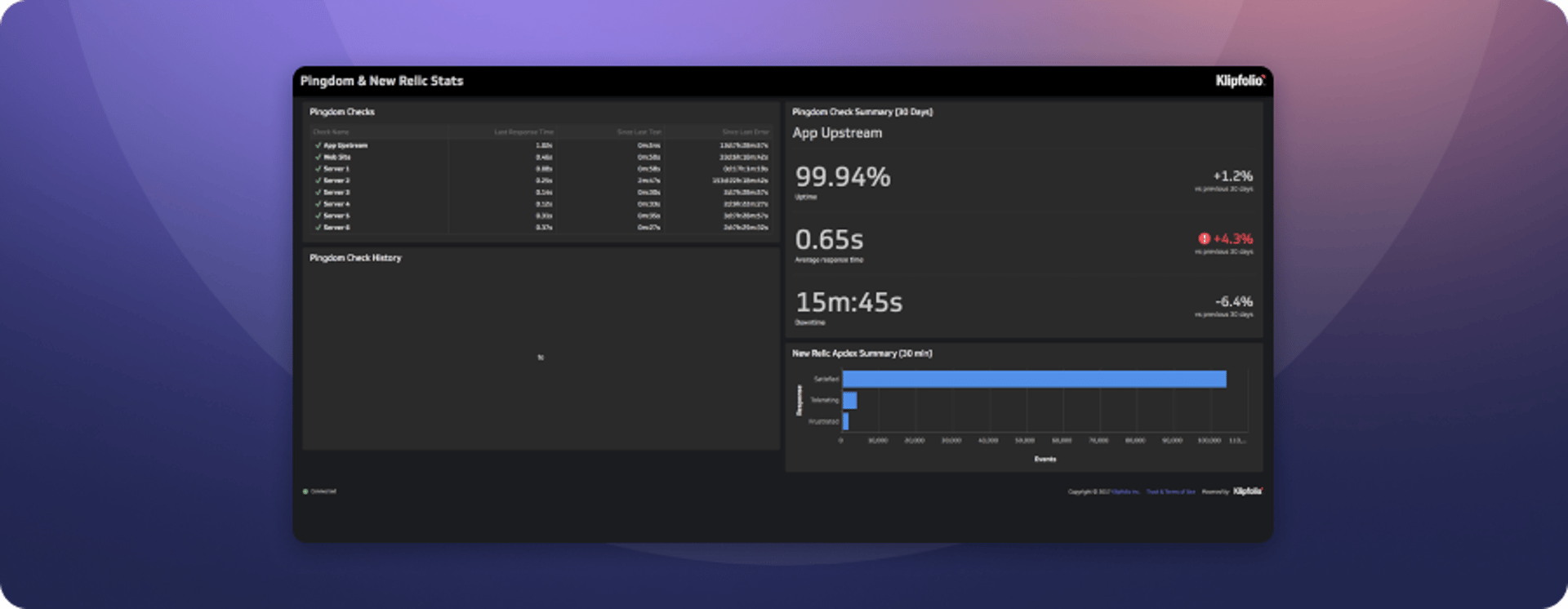
Dashboard Overview: For a SaaS vendor, your customer satisfaction is closely-tied to application performance. The causality is clear: poor performance results in sudden, dramatic drops in customer satisfaction. This is doubly true when you’re a dashboard vendor displaying real-time metrics to your customers.
Application performance can change at a moment’s notice, and our dashboard allows to stay in lock-step with these changes. If something goes wrong, we need to know immediately so we can act before customer experience is adversely impacted.
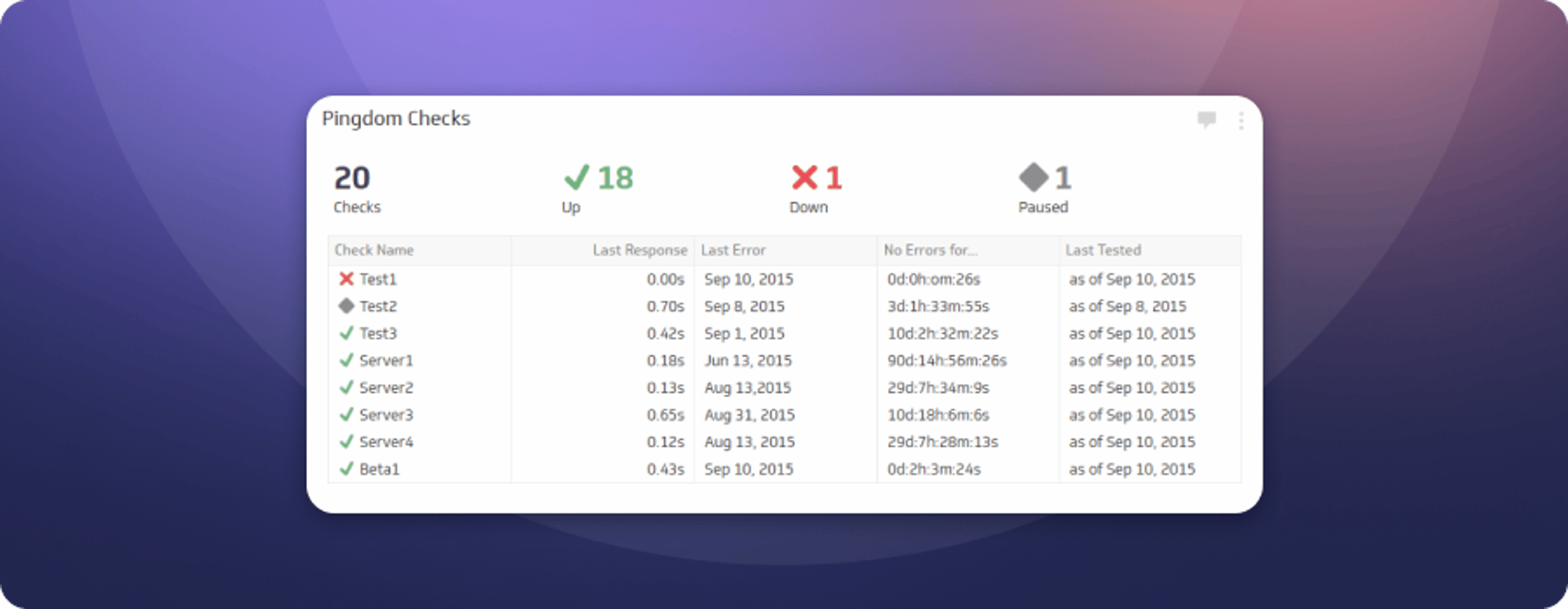
Pingdom Checks
Displays service availability and response times. Pingdom checks help show if a service is visible from the outside world, and reports how long a service took to respond.
Sales Dashboards

"Our sales dashboard is about hitting our growth targets one day at time. If we’re lagging behind a goal, we go ‘all-hands’ on deck and take action immediately."
- Rupert Bonham-Carter, VP of Customer Success
Overview
For any startup, sales efforts are intimately tied with the organization’s growth objectives; if you aren’t able to hit your targets, whether they’re daily, weekly, or monthly, you’re going to struggle to get any kind of market traction.
At Klipfolio, our success team is charged with the task of growing the business by turning qualified prospects into Klipfolians (a term of endearment around here).
We have set some ambitious, yet realistic, growth objectives this year; however, we take it one day at a time, and focus on hitting our daily and monthly targets. Our sales dashboard reflects this, and conveys urgency when we’re at risk of not hitting our targets.
Current Performance
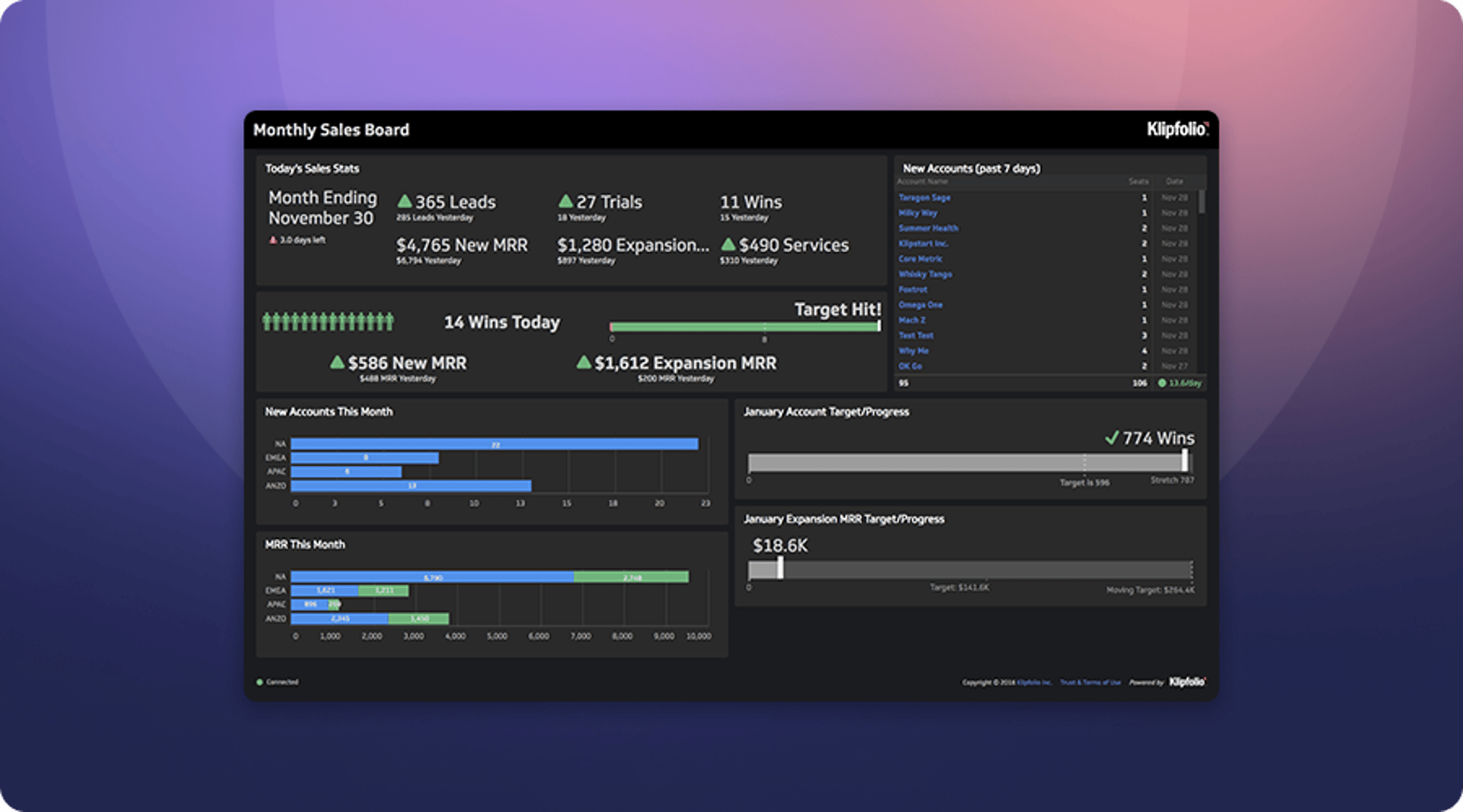
Dashboard Overview: The Current Performance Sales Dashboard provides the sales team and leadership with a detailed view of current sales activities and attainment against goals. Each Klip displayed on the dashboard is designed to enlist action when a target is not being met. The real-time nature of the dashboard ensures the team is aware of their current performance, and allows them to make adjustments throughout the month to ensure targets are being hit (and, ideally, exceeded).
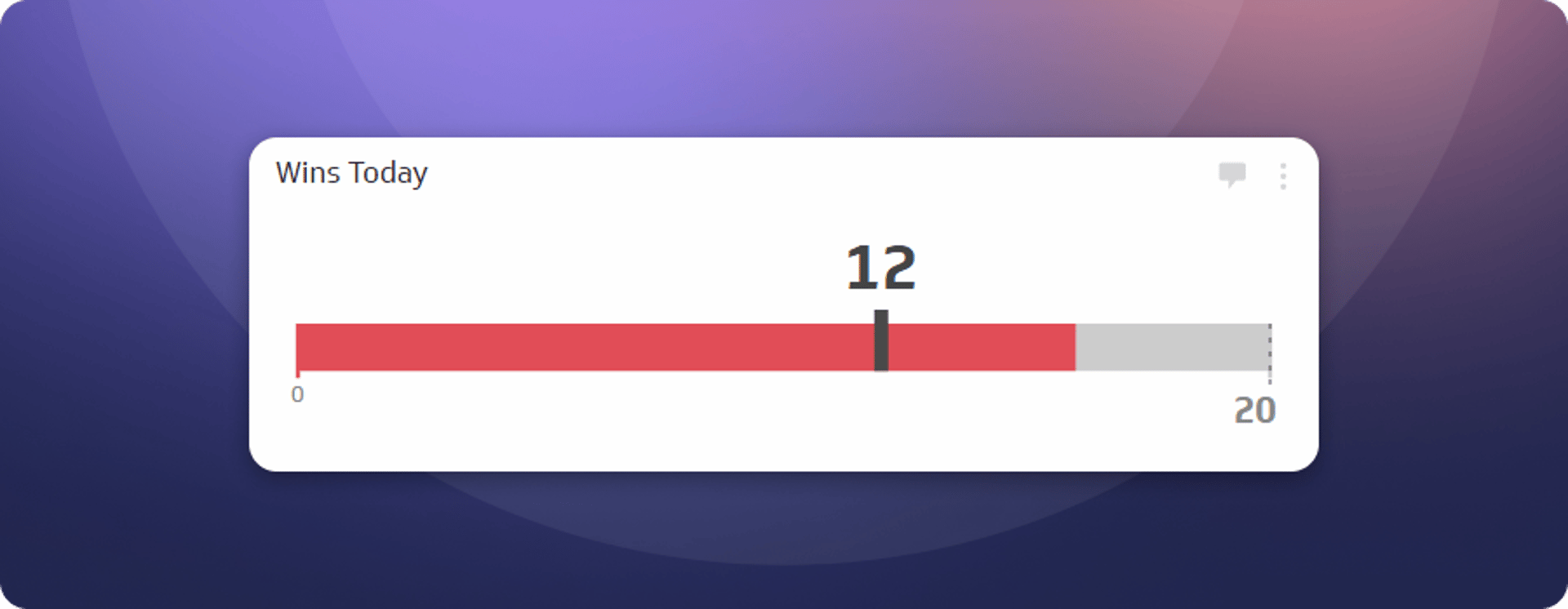
Wins Today
One theme you’ve probably noticed in our dashboards is that we place a lot of importance on hitting daily targets. This is nowhere more apparent that in the Wins Today Klip on this dashboard. Each day our sales team will aim to win a certain number of customers; by hitting their daily target, they get relief in the form of a gauge turning from red to green. Otherwise, the predominant color of red motivates the team to work with prospects.
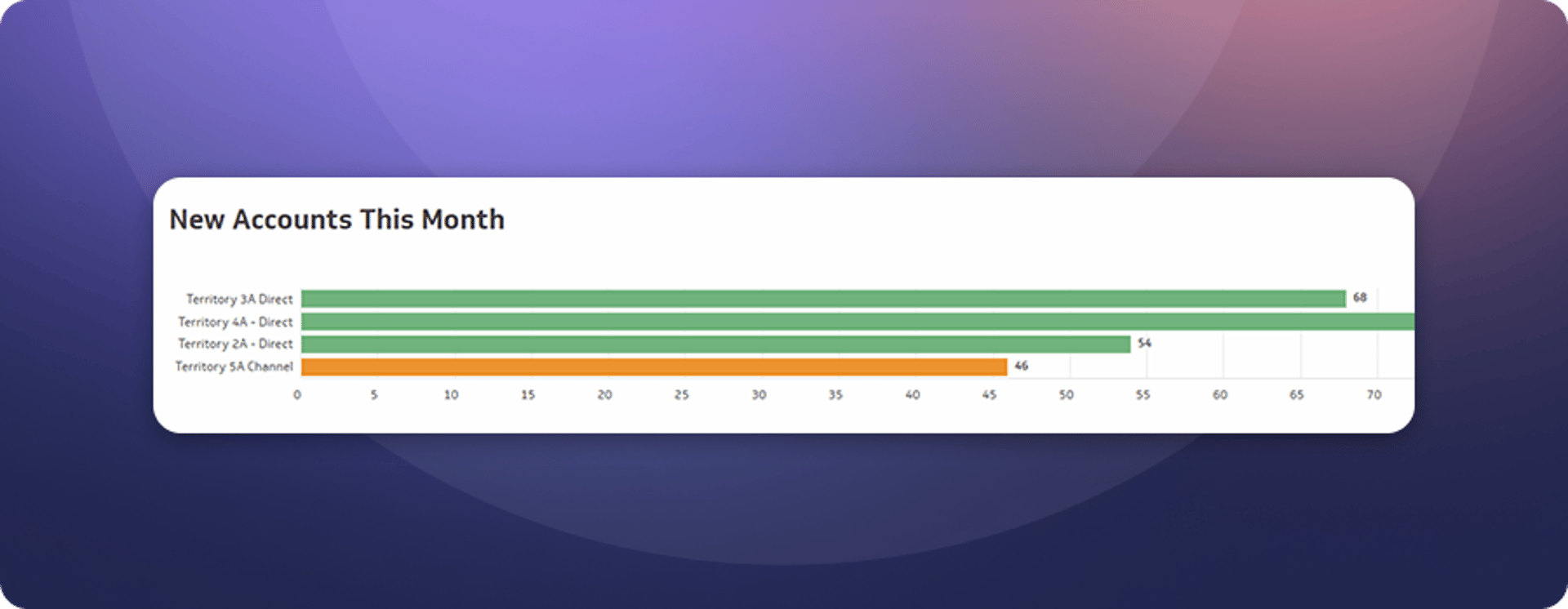
New Accounts Target (This Month)
While sales gurus will focus on hitting daily targets, those numbers are framed within the larger story of performance this month. How are new wins contributing to our monthly target? The team is given extra motivation with the addition of a ‘stretch’ goal each month.
Periodic Performance
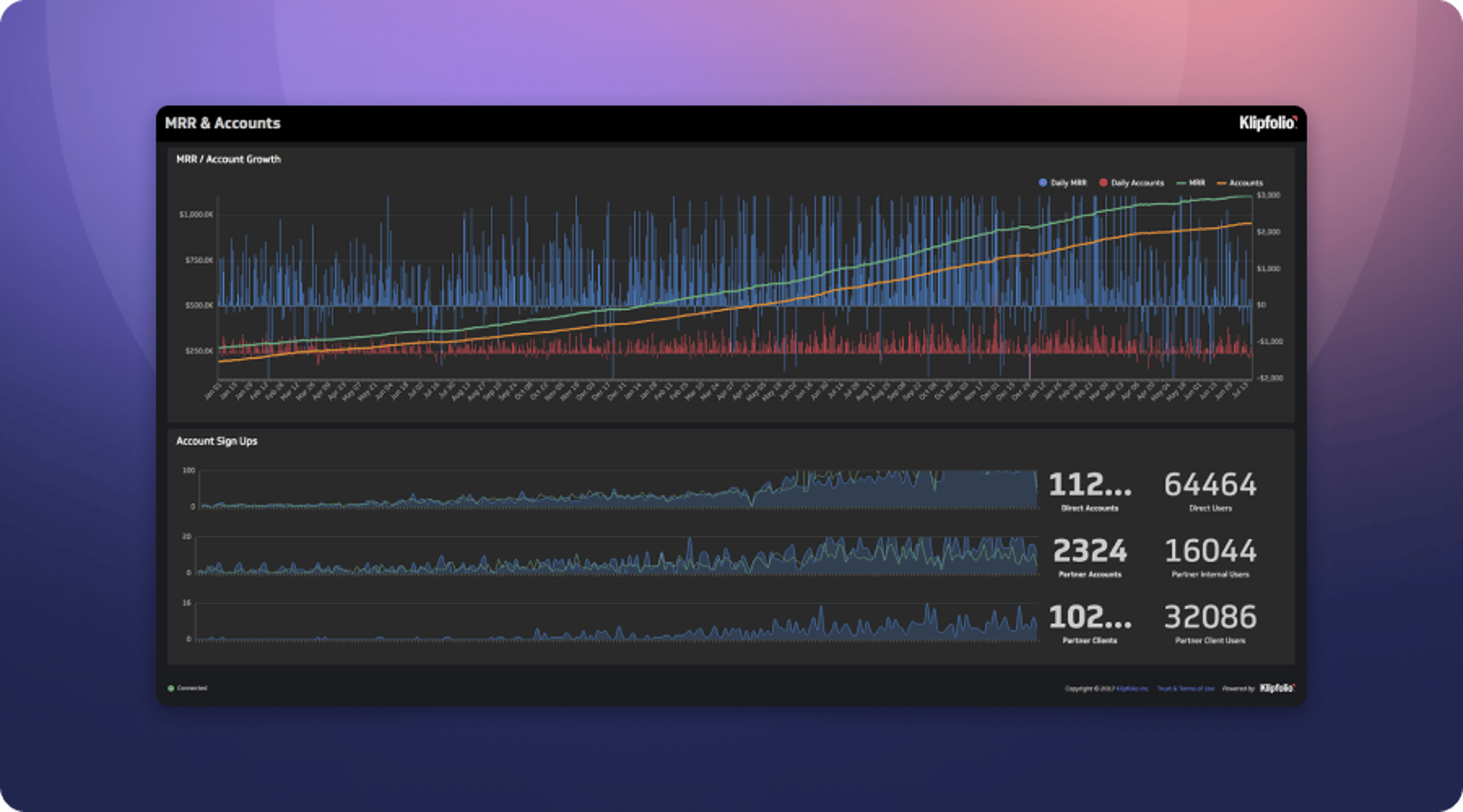
Dashboard Overview: While real-time dashboards that convey urgency around our daily or monthly growth targets are the norm here at Klipfolio, we also provide rich dashboards that allow us to explore trends and dig deeper into key metrics. This is best exemplified in the Overall Performance Success Dashboard. Long-term trends, high-level business objectives, and deeper analysis of account acquisition trends are displayed in an easy to read dashboard.
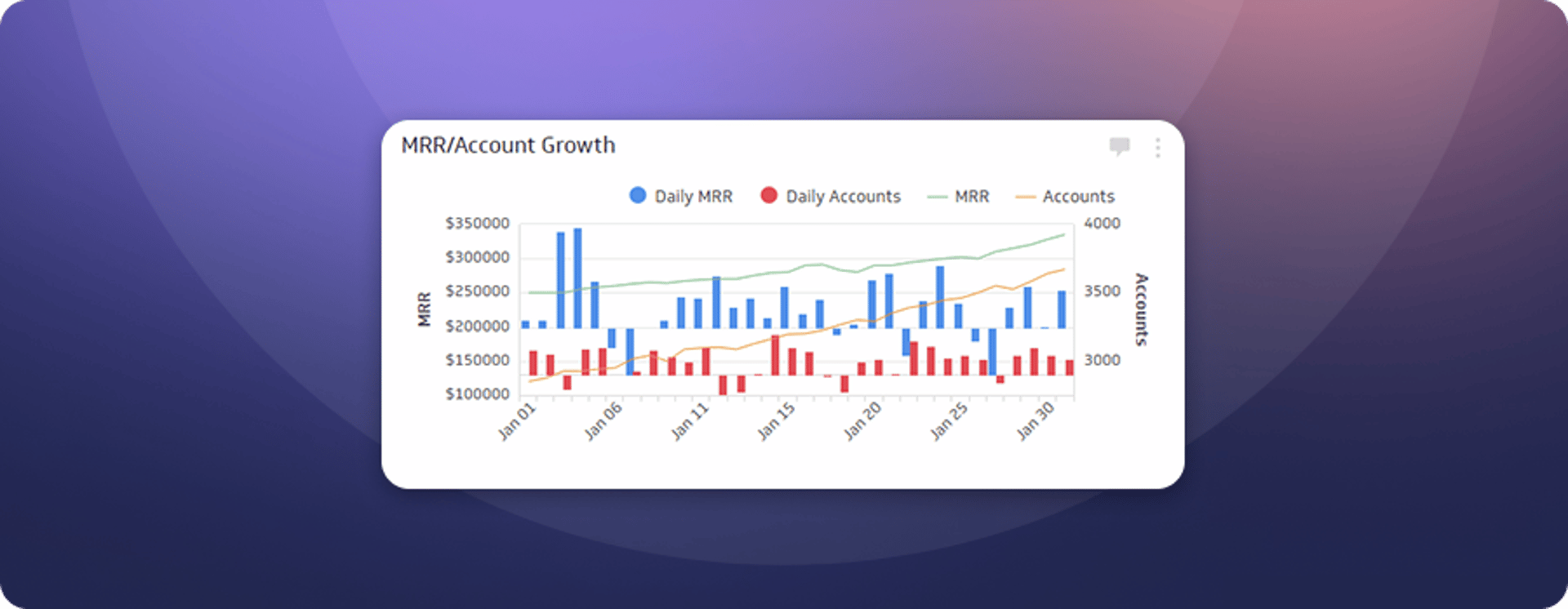
MRR/Account Growth
This chart provides a ton of information. It looks at YTD trends for New Accounts, and Churned Accounts, as well as growth trends in MRR and total Account base.
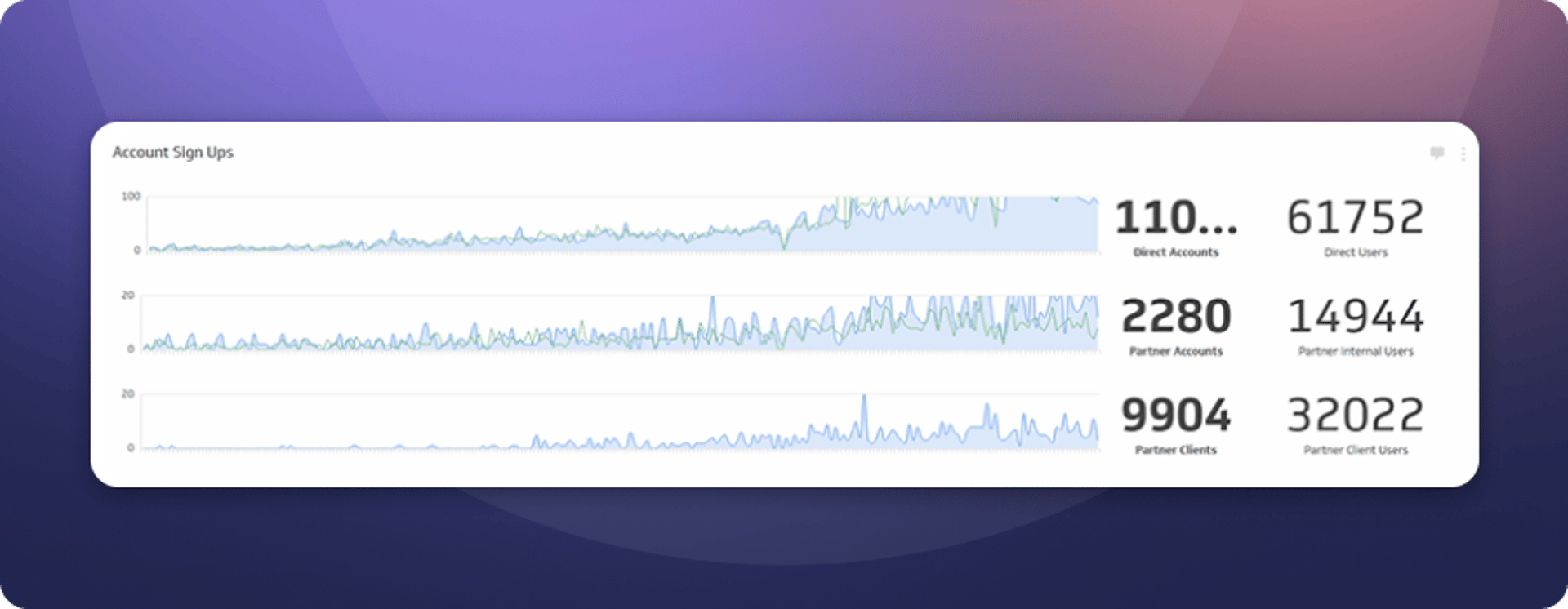
Account Sign Ups
Klipfolio has a diverse ecosystem of companies using our product, and a growing partner network of agencies, consultants, and resellers. We use this Klip to track our growth over time, and to understand the breakdown of our customer base.
Support Dashboards
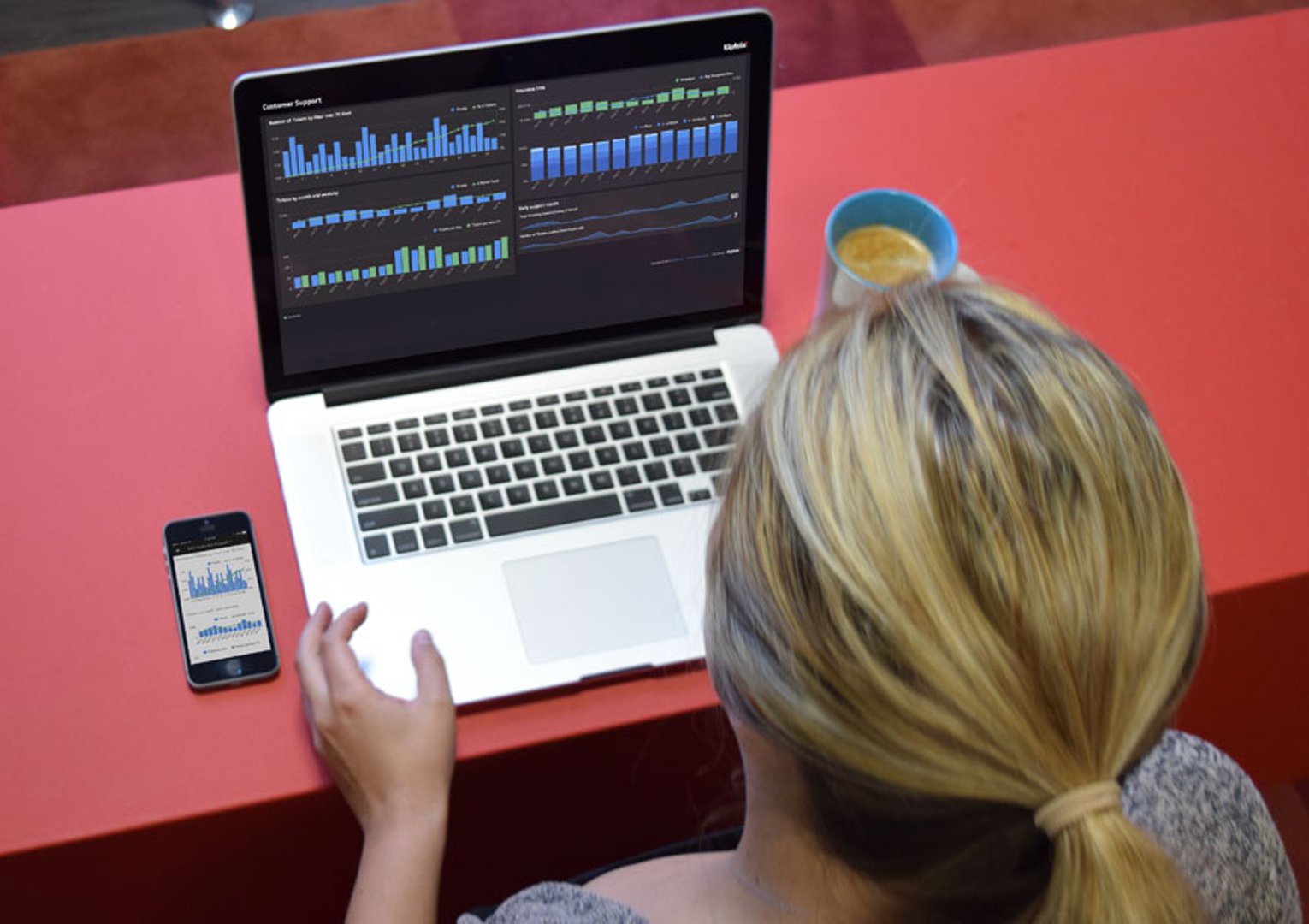
"The Support dashboard plays an integral role in helping us monitor daily support tickets and documentation trends. By paying close attention to the dashboard, we can quickly identify areas that require our attention and make informed decisions on how to allocate our resources effectively."
- Keely Davison, Director of Services
Overview
As a high-growth SaaS startup, our support activities are intimately connected with our customer success activities. Customers that work with our support team are much more likely to become paying customers. This is a trend we wish to continue, and believe reflects very well on our capable support team.
The dashboards our support team uses are focused on the metrics that indicate customer satisfaction on a daily basis: response times, ticket volumes, and number of tickets closed. Since support issues can arise suddenly and without warning, the team relies extensively on its dashboard to get real-time visibility into their activities.
Support Tickets and Response

Dashboard Overview: This dashboard analyzes the ability of our support team to respond to customer tickets in a timely manner. It's a well documented fact (here at Klipfolio, at least) that fast response times result in happy customers. We closely monitor ticket trends and response times on a monthly basis to call out any trends that may require additional investigation.
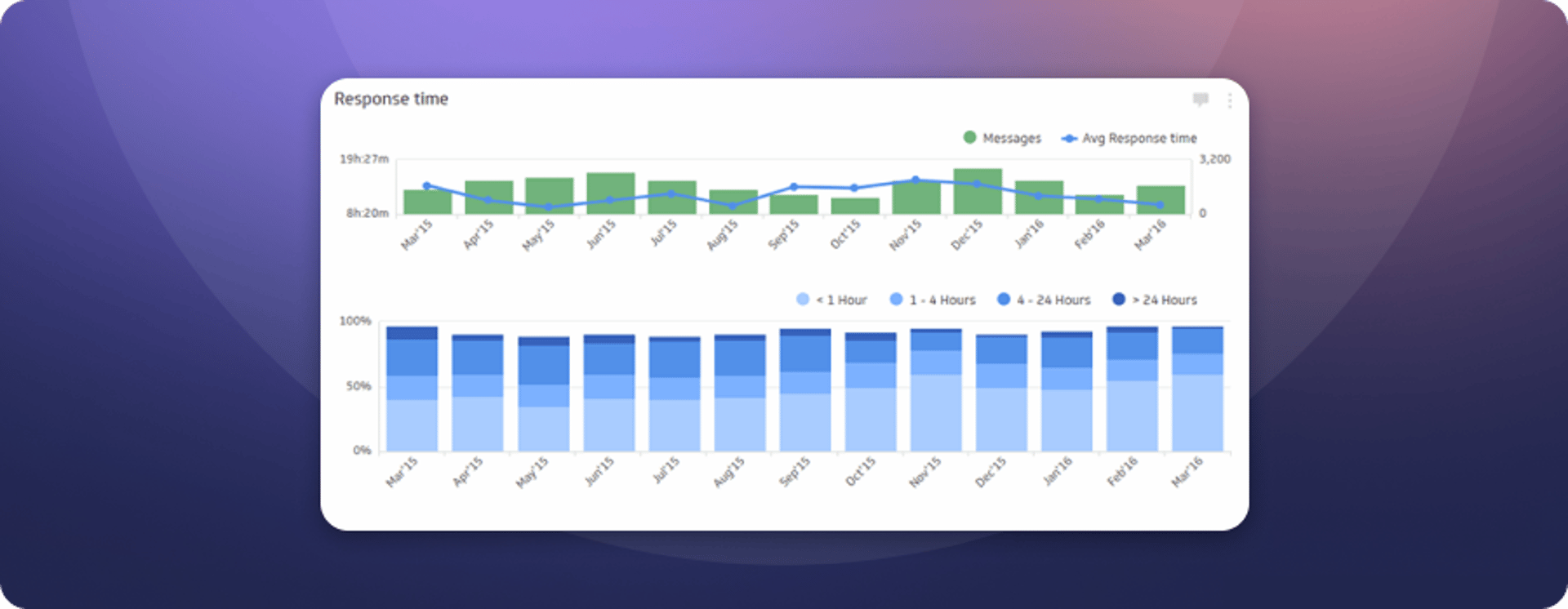
Response Time
This Klip examines our ability to respond to tickets in a timely manner. Our objective is to resolve tickets as quickly as possible so our customers can get back to happily building dashboards. Some issues take a bit longer to investigate and resolve. Generally speaking, it’s our aim to resolve all tickets within 4 hours.
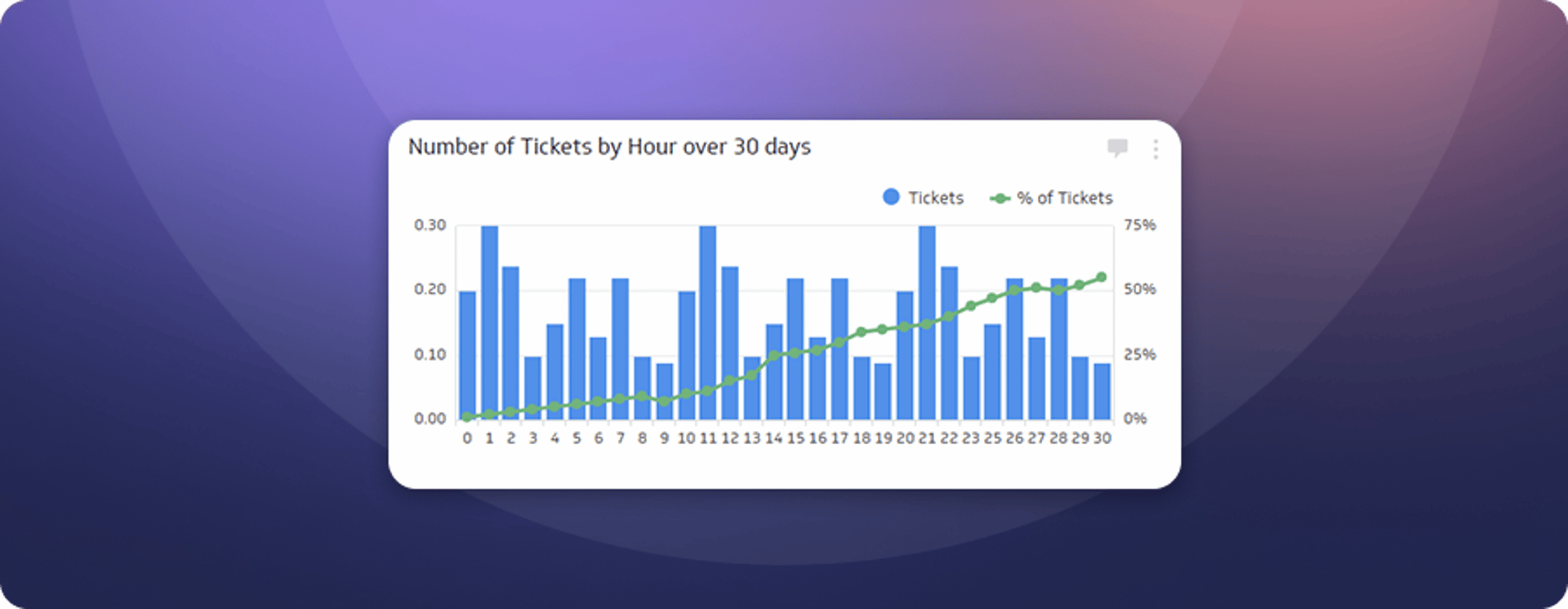
Number of Tickets By Hour (30 Days)
This Klip answers a simple, yet critical question: at what time do the majority of tickets get submitted to our team? By answering this question clearly, we can make decisions around staffing and working hours, ensuring we have the right number of support staff available when our customers need them most.
Tickets By Type
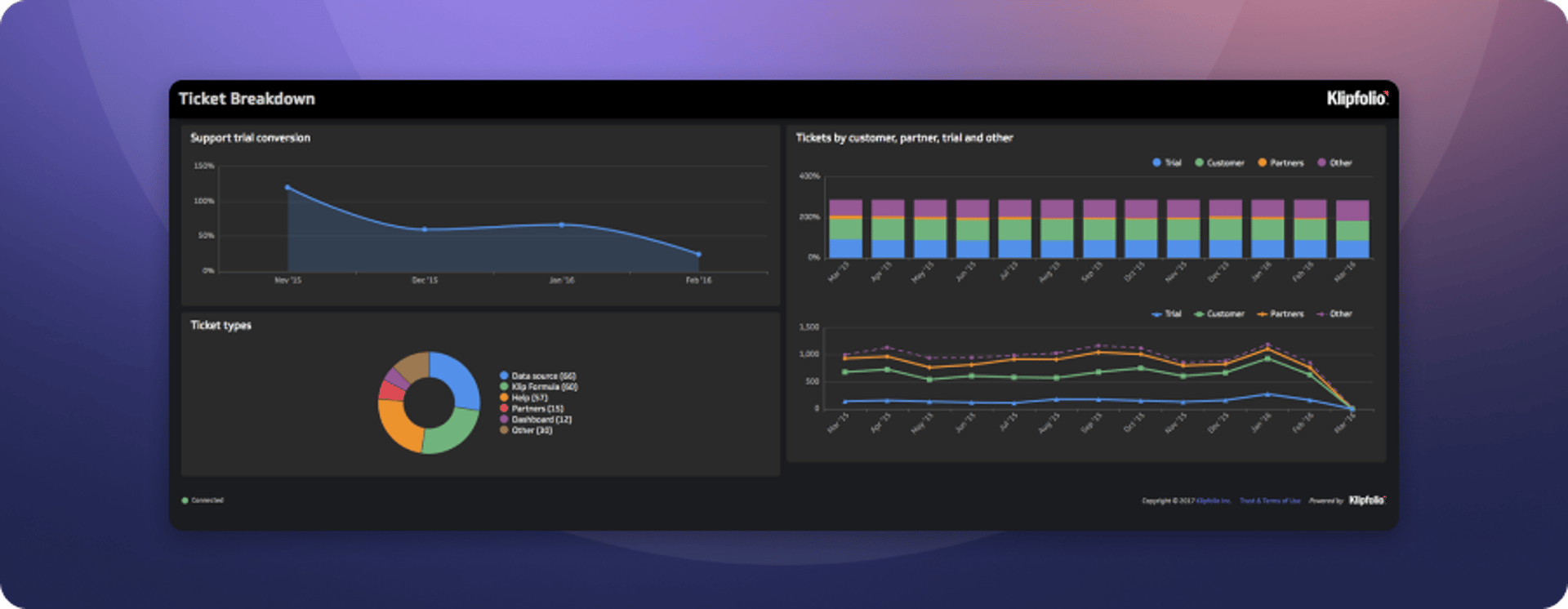
Dashboard Overview: This dashboard gives a view into the types of support tickets being submitted, and the impact of resolving those tickets. We categorize tickets in two major ways: by account type (Customer, Partner, Trial, or Other), and by ticket type (data sources, formulas, admin, etc). This allows us to inform both our sales and product team of potential opportunities to improve processes and customer experience.
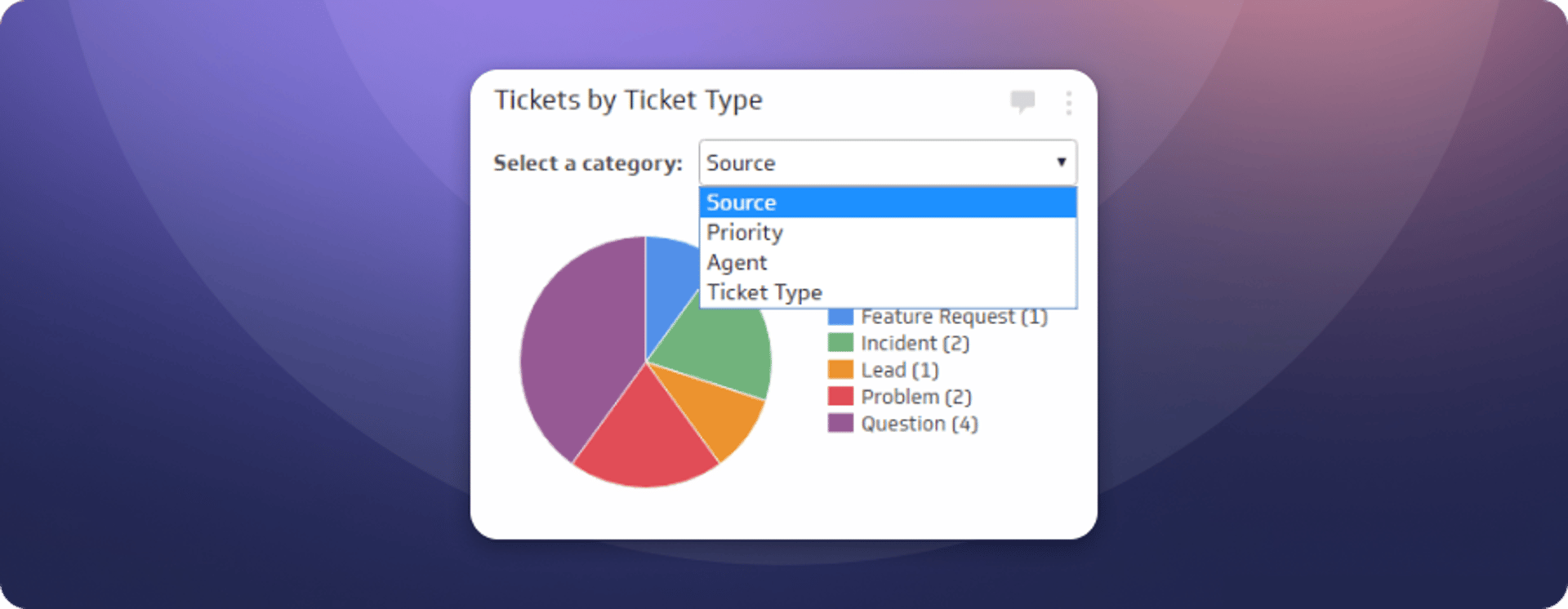
Ticket Types
We monitor and track patterns with respect to the types of tickets our customers are submitting. This allows us to, at a high level, identify trends to share with our teams like development and UX. Similarly, it allows the support team to anticipate the types of questions and queries they will be fielding on any particular day.
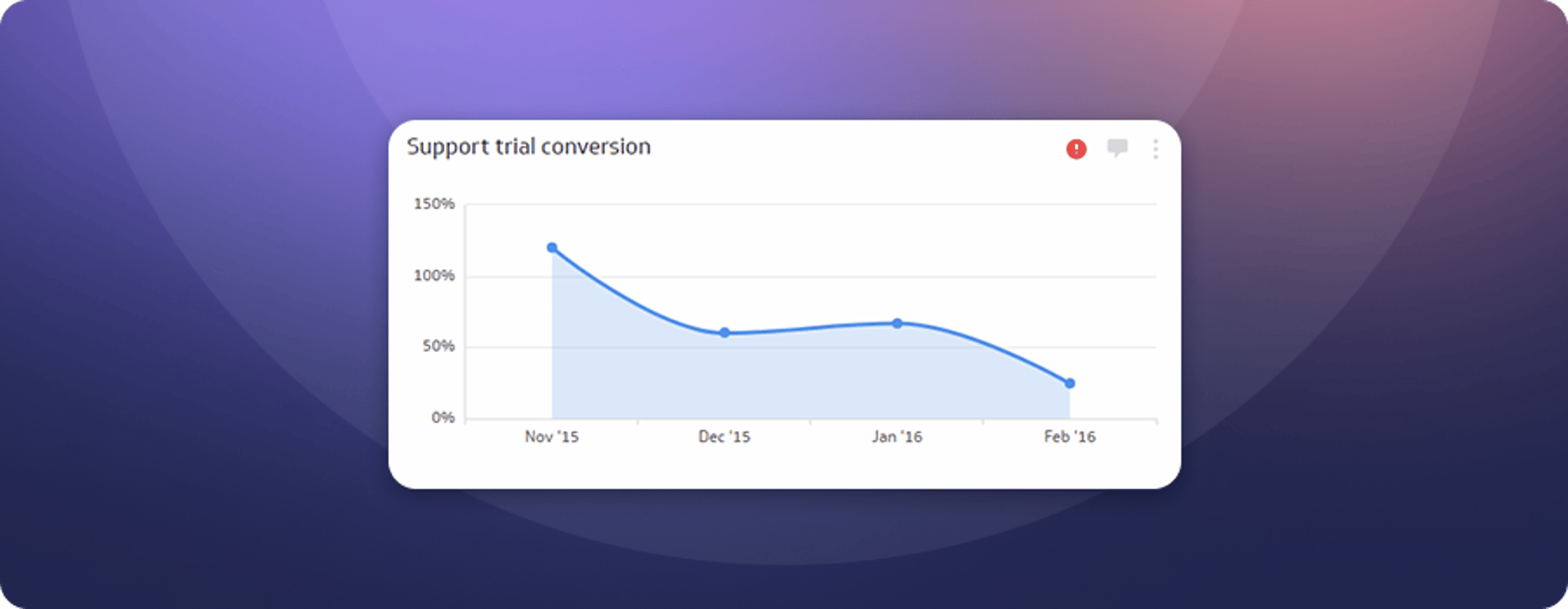
Support Trial Conversion
We’ve seen that a positive support engagement during the trial has a profound effect on trial conversion rates. That’s something that we closely monitor, and a behaviour we strongly encourage. In fact, this behaviour is so important we’ve recently added chat box functionality within the application to help users the second they have a question.
Documentation and Web Analytics
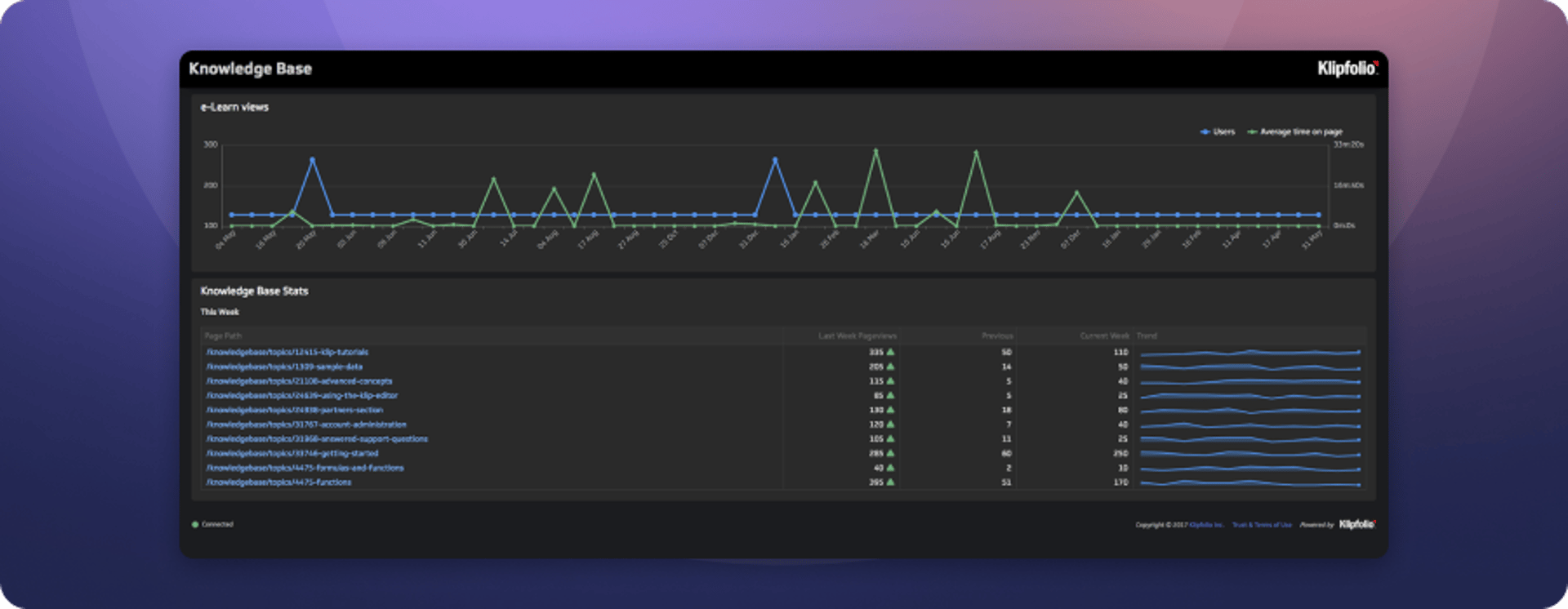
Dashboard Overview: We’ve made extensive investments into our web-based documentation, and diligently track its performance using web analytics. The two core stats for our team is number of views to our Knowledge Base and our E-Learning modules.
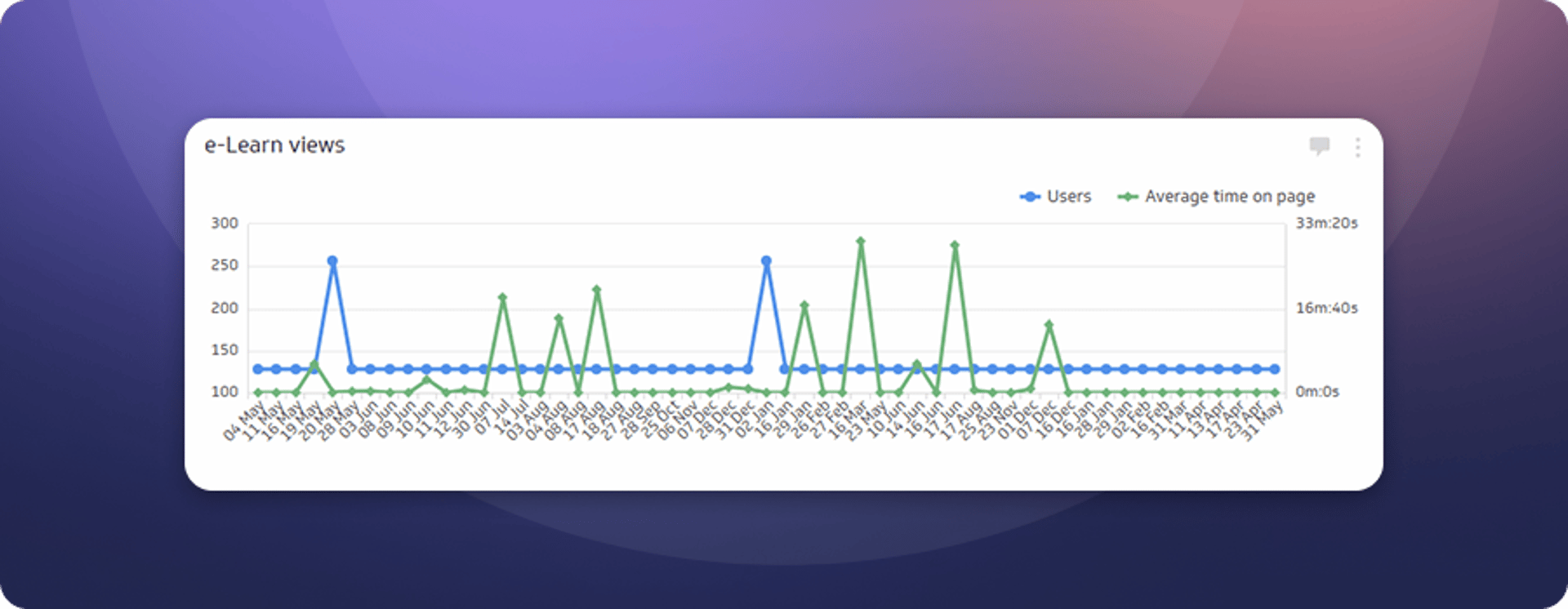
E-Learn Views
This Klip tracks the number of visitors to our e-Learning module, and the average time on page. For web documentation, average time on page is a leading indicator that helps determine the effectiveness of documentation.
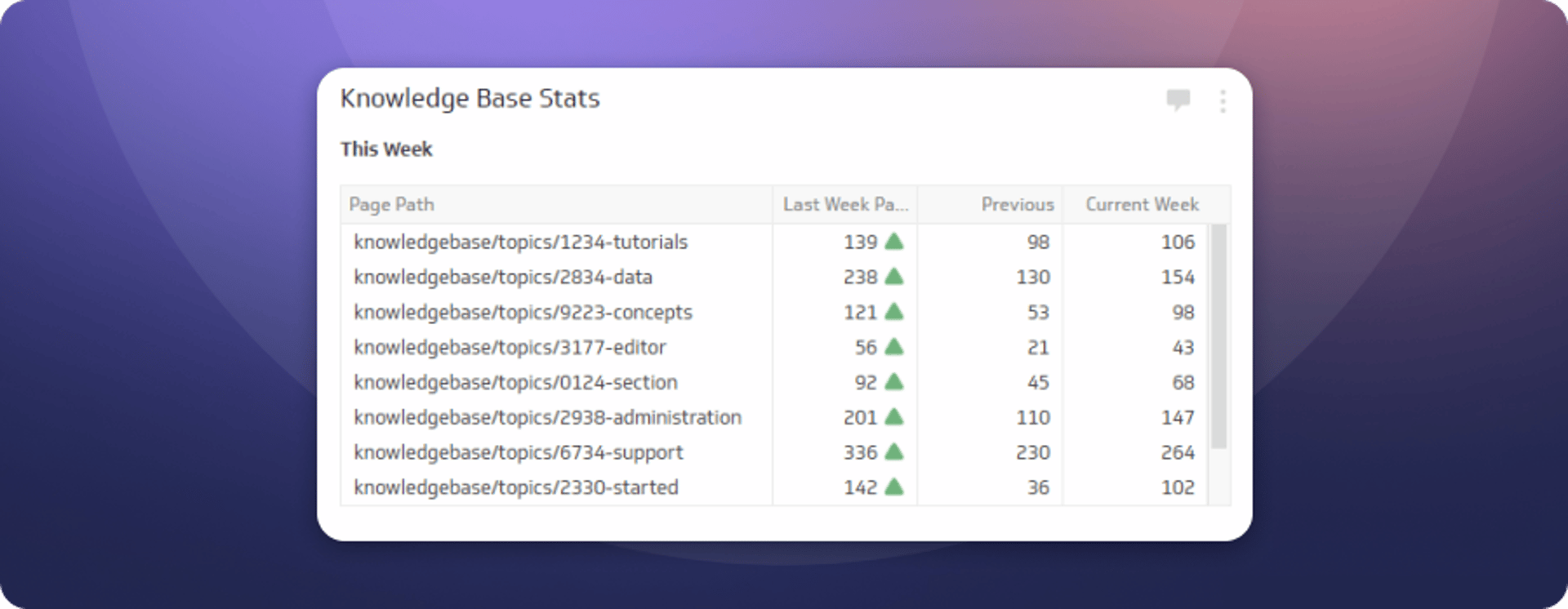
Knowledge Base Stats
This Klip tracks the number of visitors to any particular page within our Knowledge Base, and compares that value to the previous week. This allows us to determine the most popular articles when prioritizing documentation reviews, and for modeling future content.
UX Dashboards
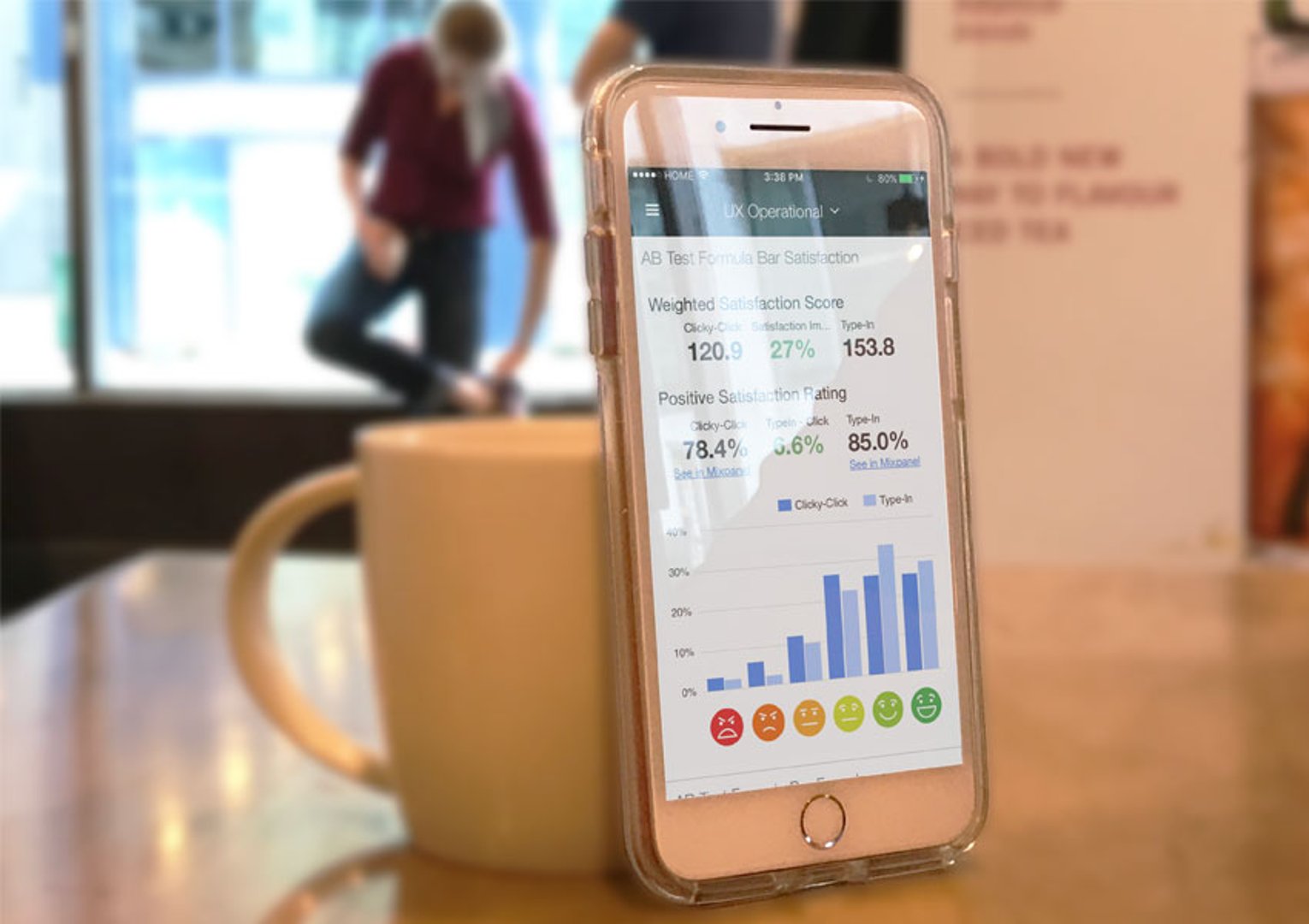
"A SaaS startup’s most valuable growth asset is its product. Our team is tasked with improving user experience within the product to provide customers and prospects with the best experience possible. The dashboards we use reflect this, and demonstrate how we measure our progress towards success."
- Peter Matthews, CXO
Overview
The UX team judges its success through its ability to improve customer win rates and reduce customer churn. These metrics are tracked on a daily cadence on their dashboard against the backdrop of historic averages to account for oddities or sudden changes in the data. In terms of leading indicators, the UX team also measures the number of active users and daily dashboard.
This dashboard plays a key role in aligning the UX and product teams around customer-facing initiatives. Sometimes the dashboard flags issues that are immediately actionable, while other times it’s used to provide context and real-time stats for strategic planning.
UX Operations
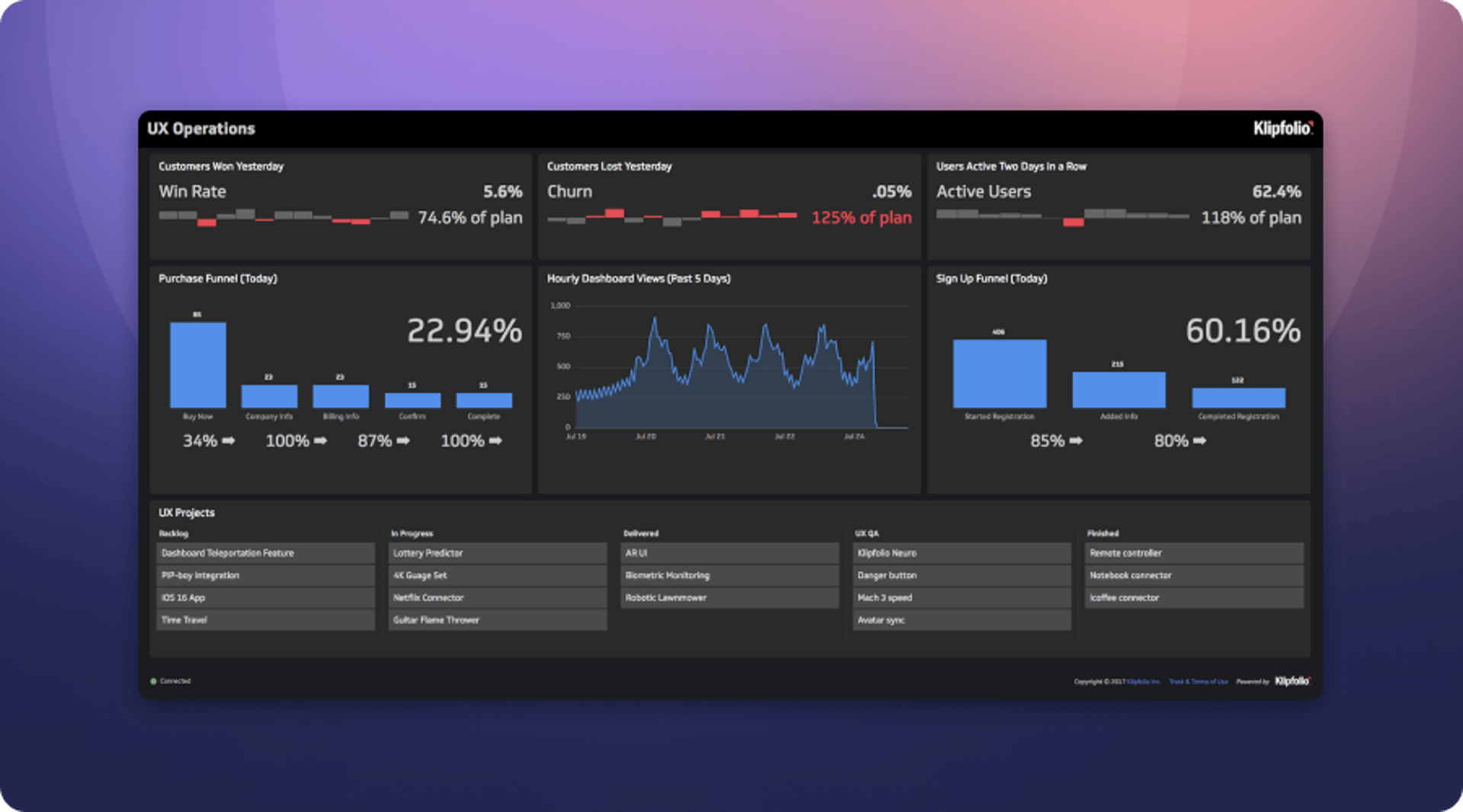
Dashboard Overview: This dashboard provides a daily view into how users are interacting with our product. We track a number of funnels to help us understand task completion rates for events like purchasing or creating a visualization. The dashboard also provides a view into top-line metrics like win rates and customer churn.

Klip Gallery Funnel
The Klip Gallery was launched in April 2015 to speed up and simplify dashboard creation in Klipfolio. This funnel assesses how successful customers are at adding template Klips to their dashboard.
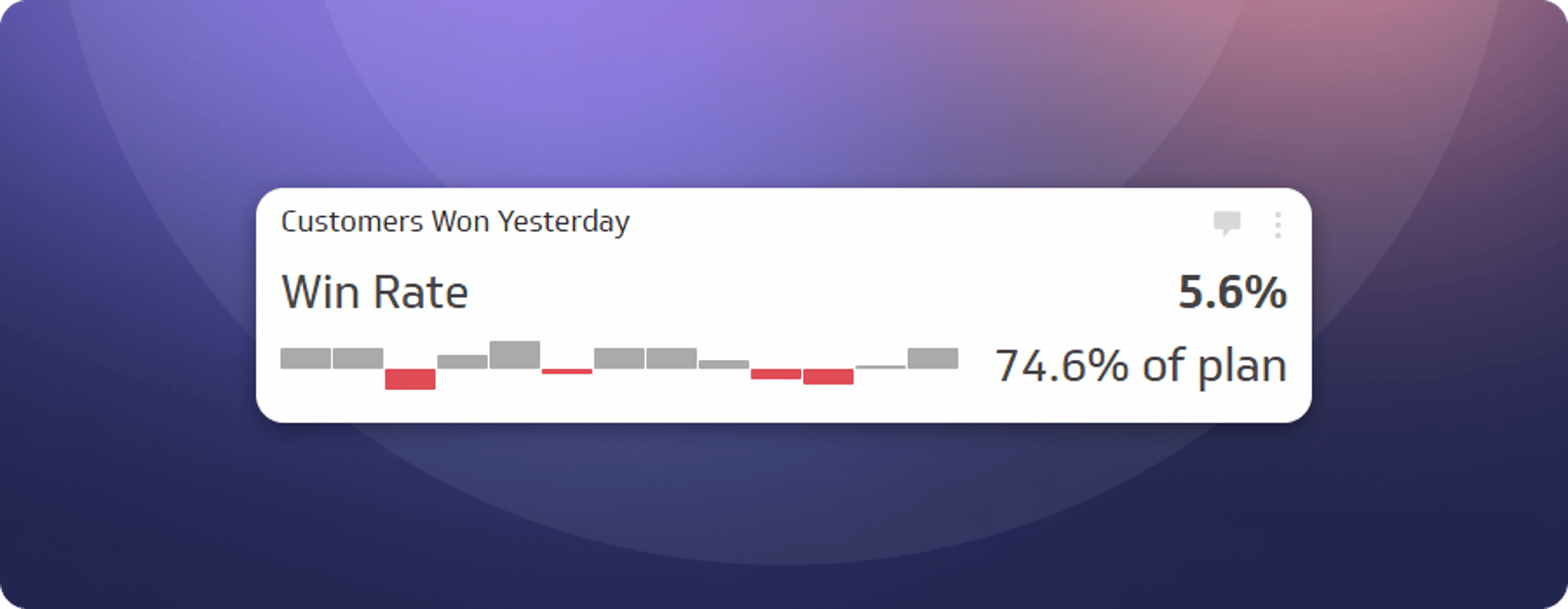
Customers Won Yesterday
Our UX team pays close attention to the behaviour of trial users, and especially the rate at which they convert into paying customers. Each trial user approaches the application with a blank slate of expectations; the UX team aims to provide a product experience that allows them to get started quickly and to realize the value of Klipfolio. Customer win rate is the best metric to measure achievement of this goal.
How do you track your performance
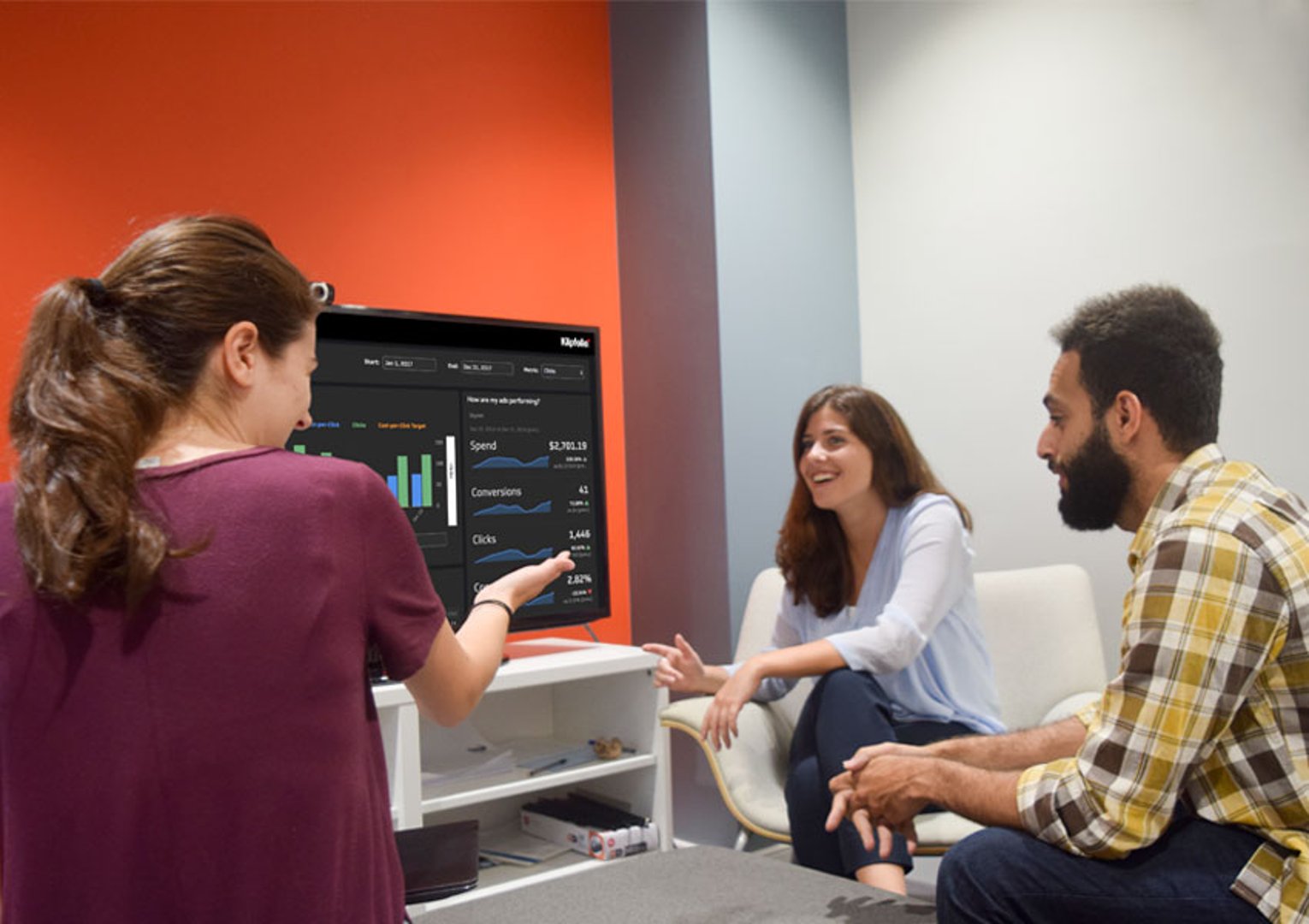
We hope you’ve enjoyed the tour of our dashboards, and that it’s given you insight into how we use operational dashboards to manage our business.
We use each of these dashboards to monitor our daily performance, make tactical adjustments, and ensure we are hitting our growth targets. The dashboards throughout the ebook are decidedly startup focused, and convey the sense of urgency that characterizes the culture of many SaaS startups.
Even if you’re not part of a startup, the dashboards in this ebook should provide some good ideas for the types of real-time dashboard your business can use. Our dashboards are designed to encourage continuous monitoring and to encourage everyone on our team to act when a problem or opportunity is spotted. Why wait until a monthly or quarterly report to find out a project or campaign has gone off the rails?
If you take one insight away from this ebook, it’s that real-time dashboards answer the allimportant question, “How are we doing right now?” For startups like us, that means managing our growth numbers and always being ready to act on good data; for any organization, it means taking a proactive approach to the numbers driving our business, and, in a very real sense, grabbing hold of the steering wheel to instantly act on changing circumstances.